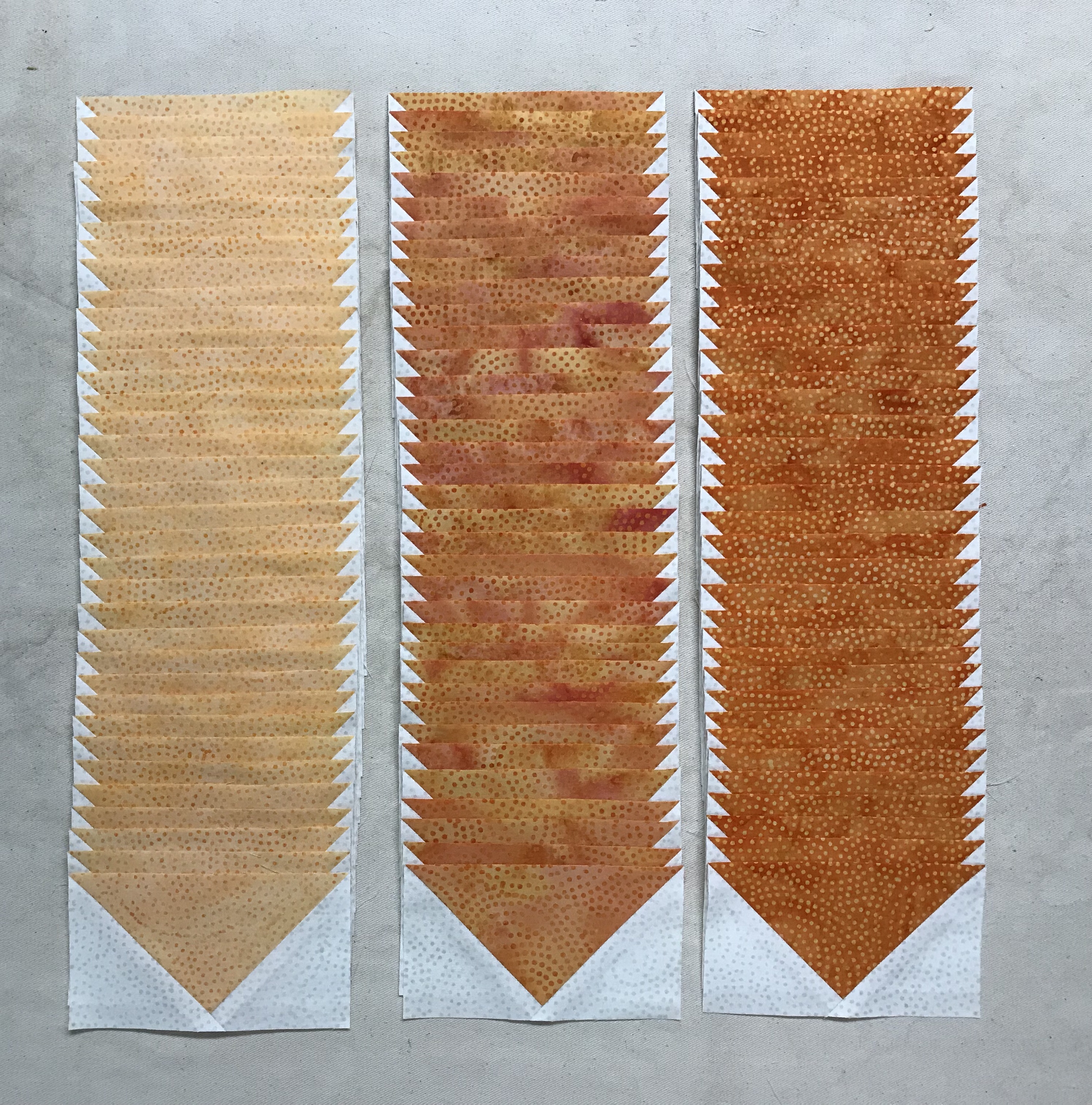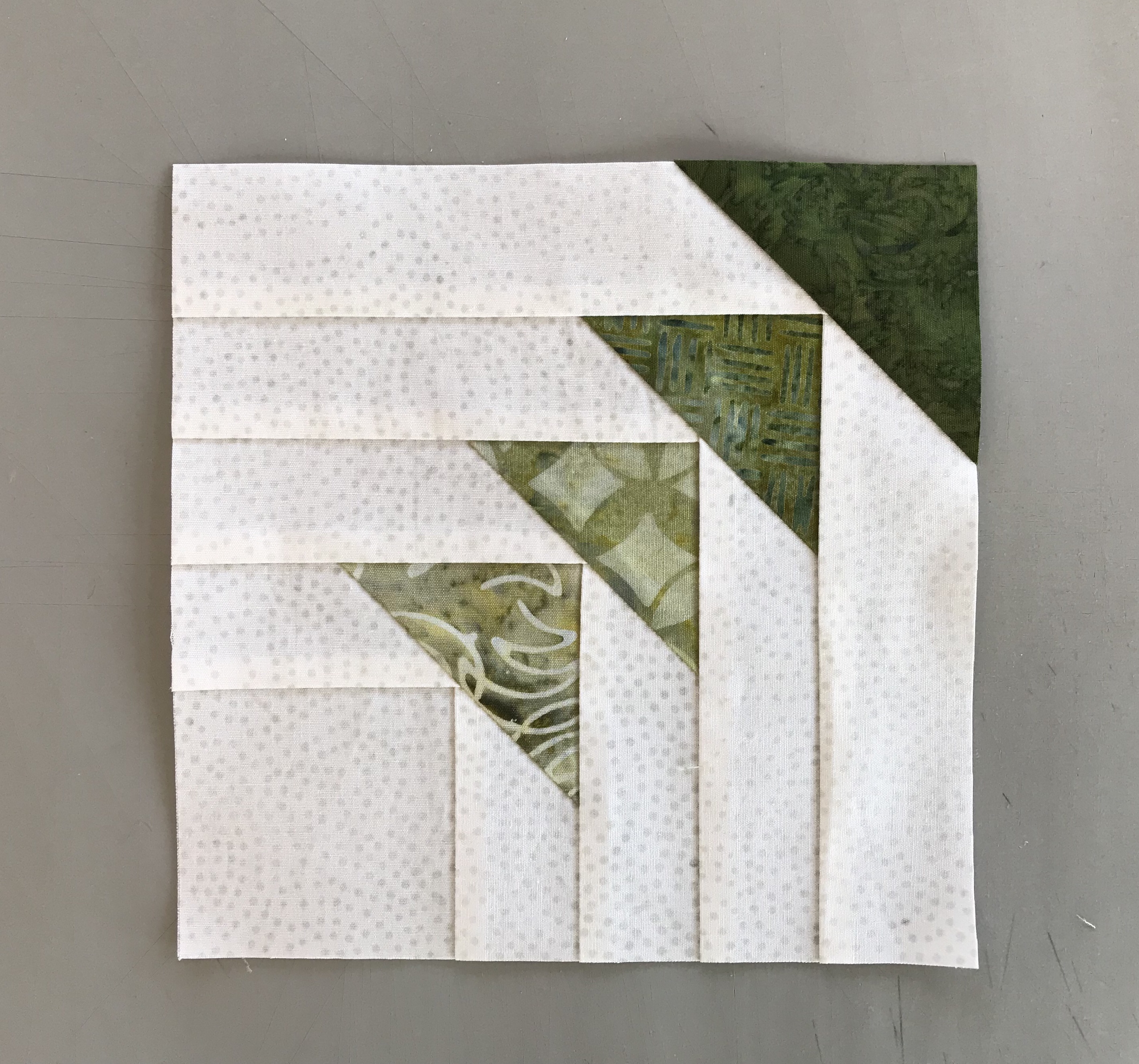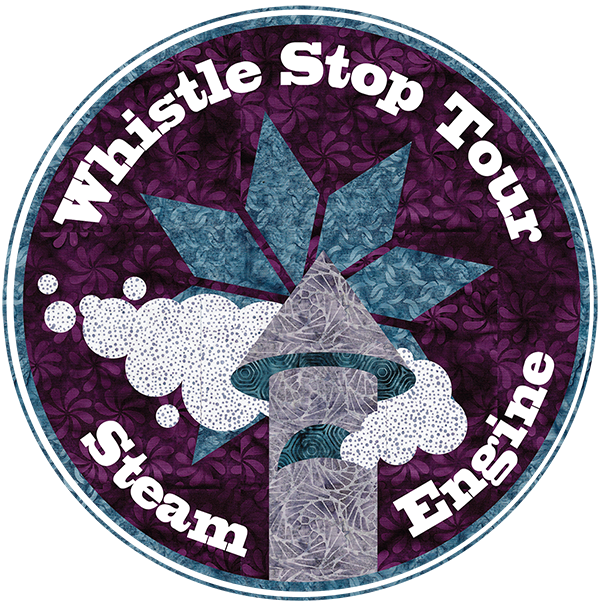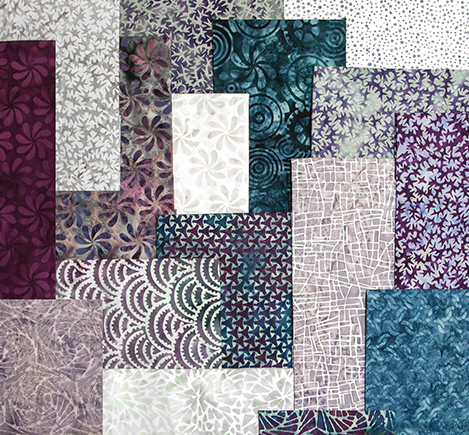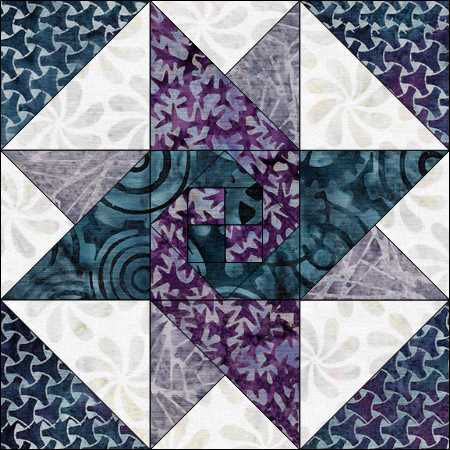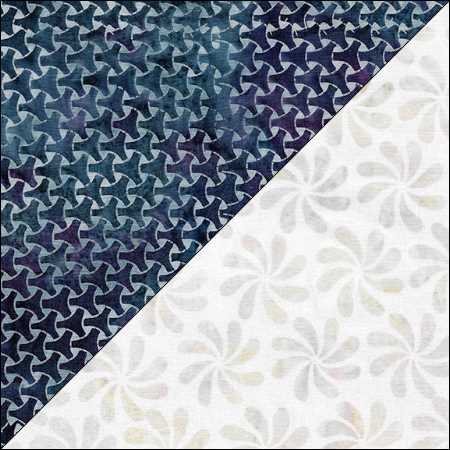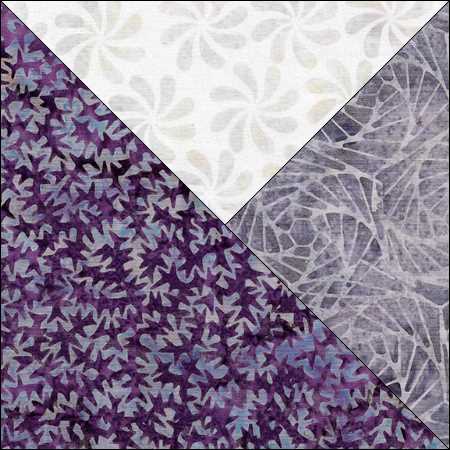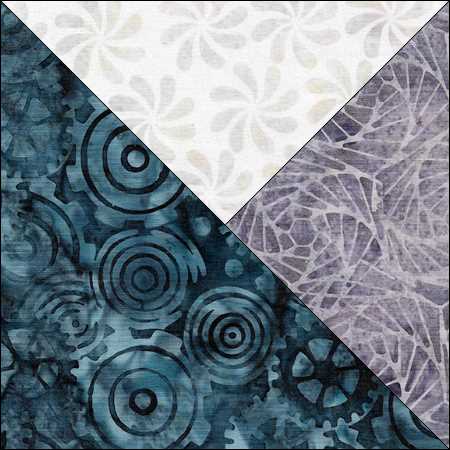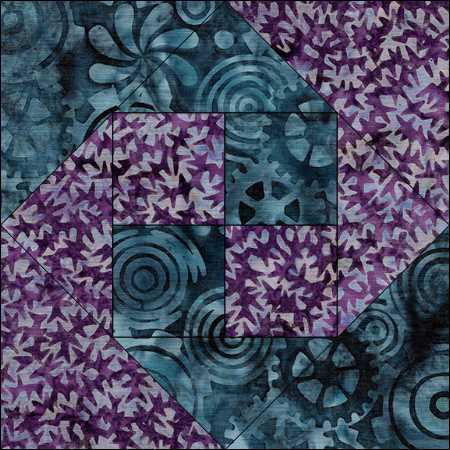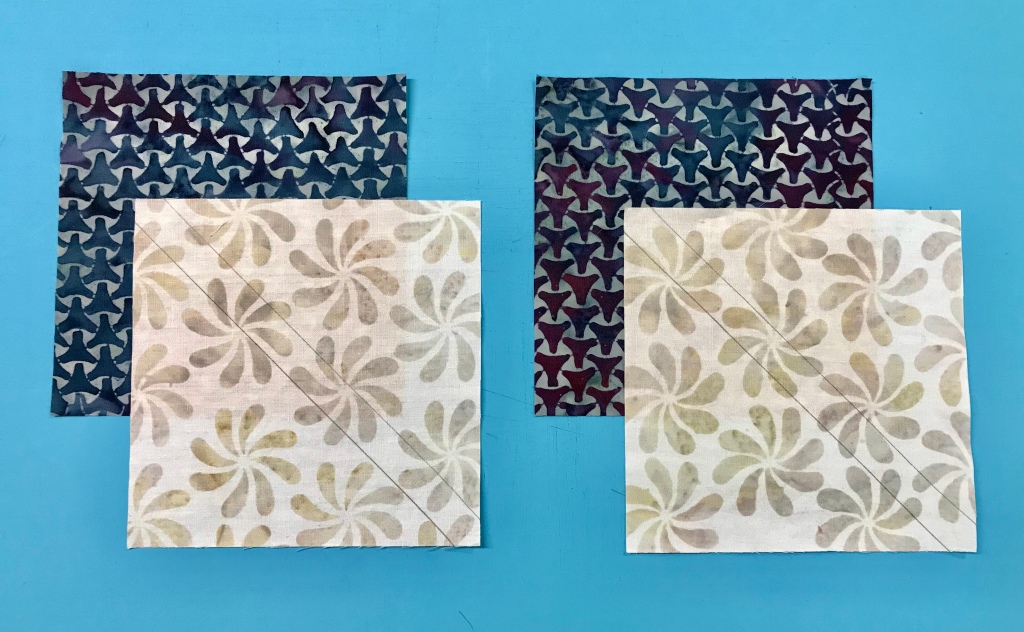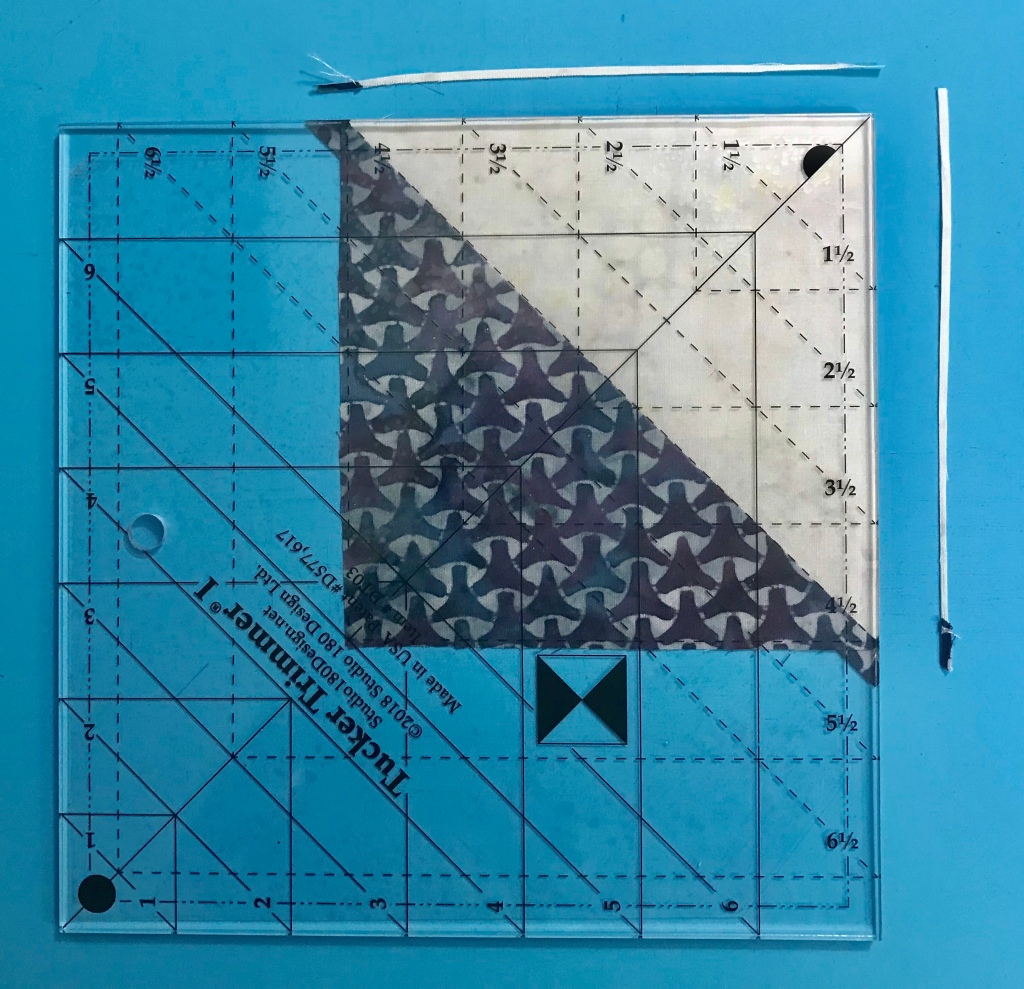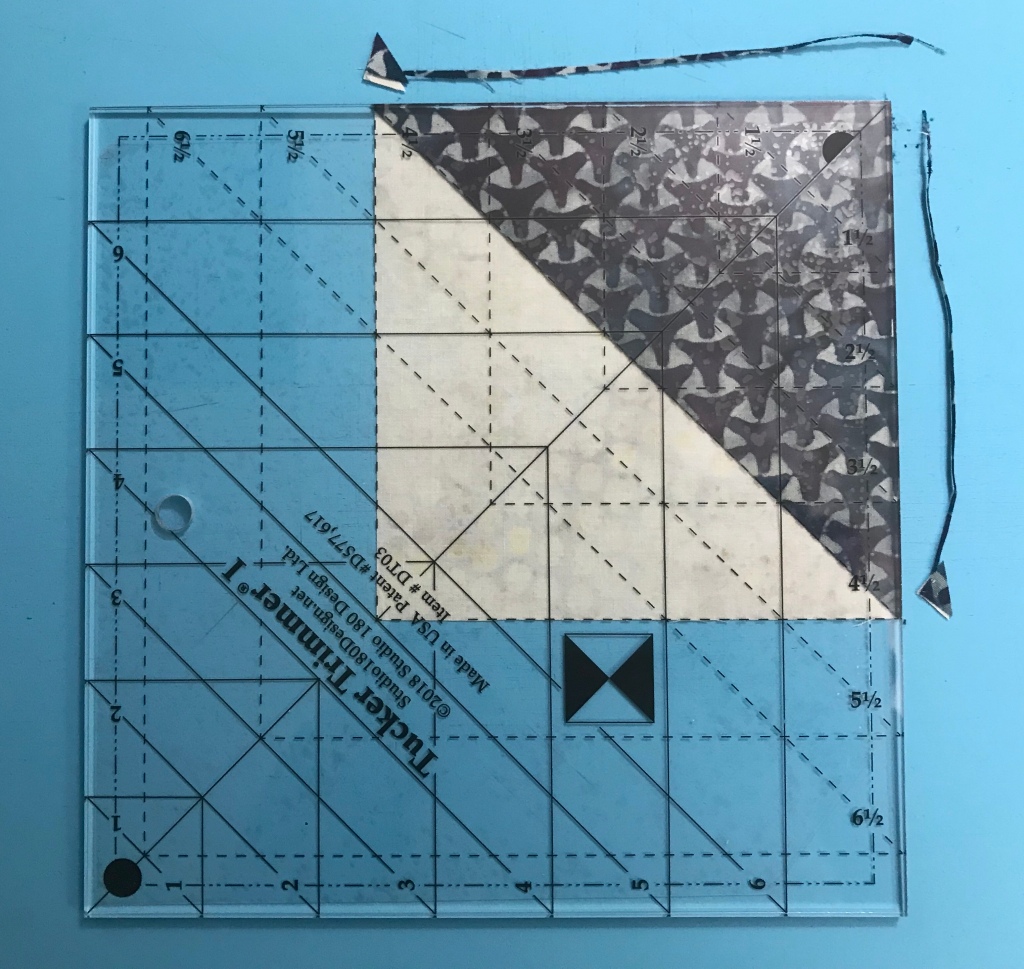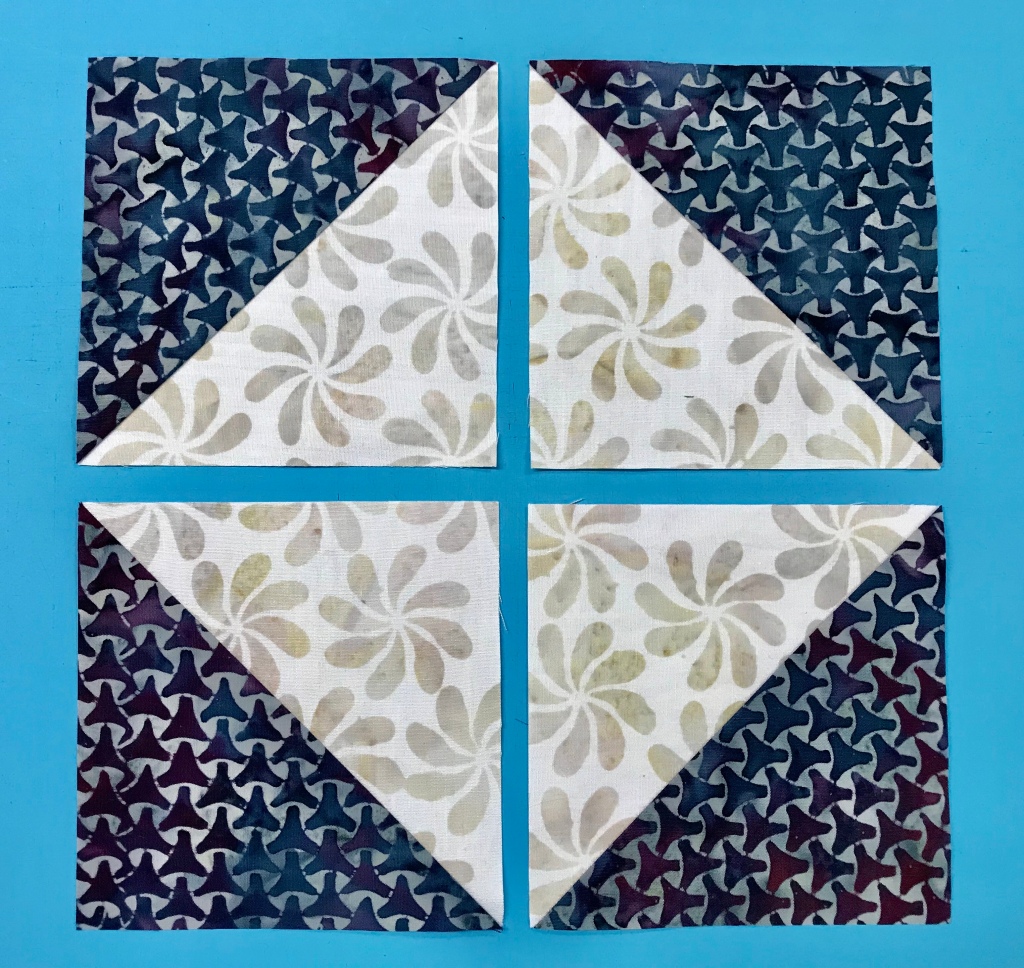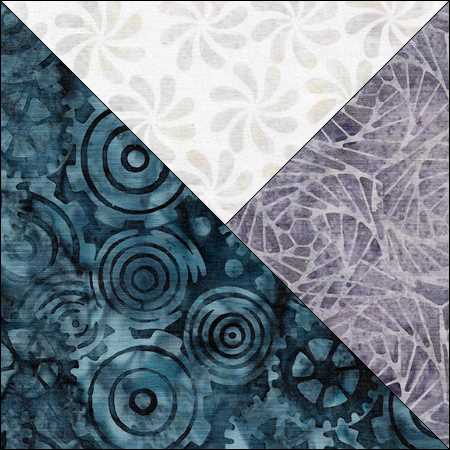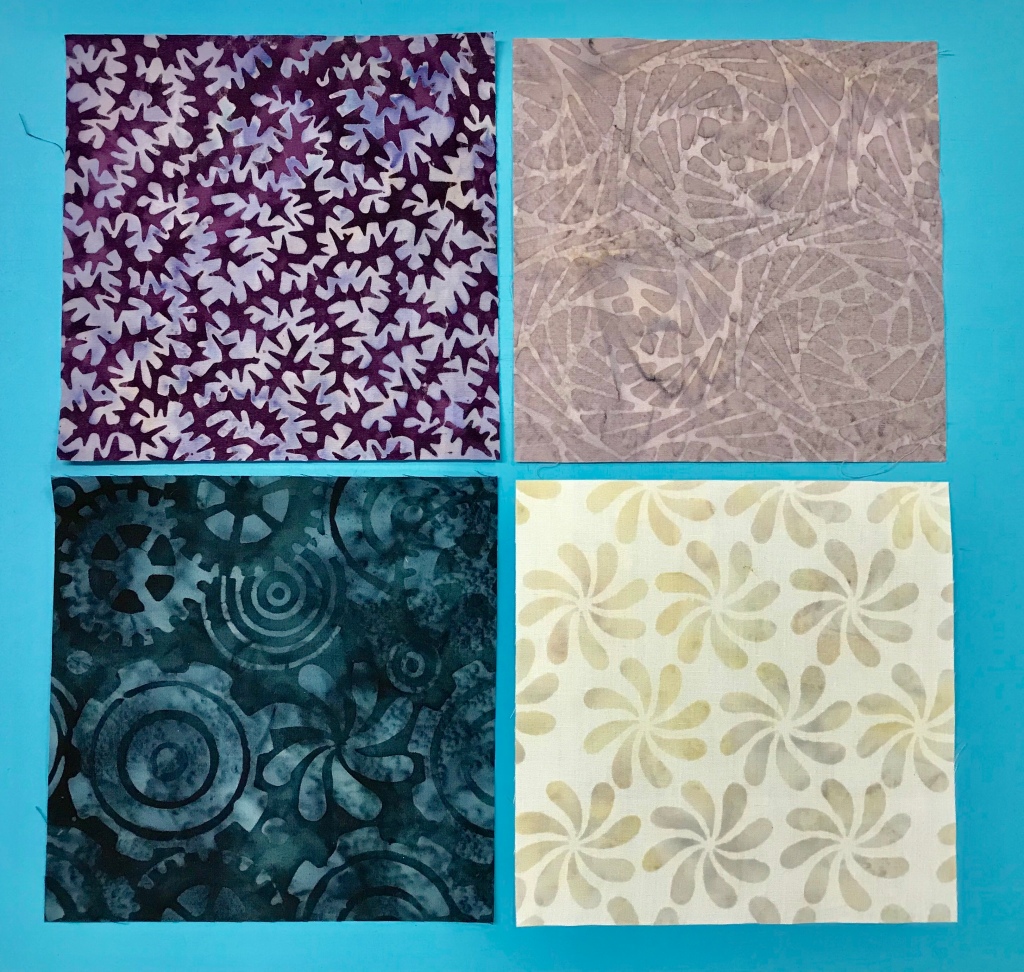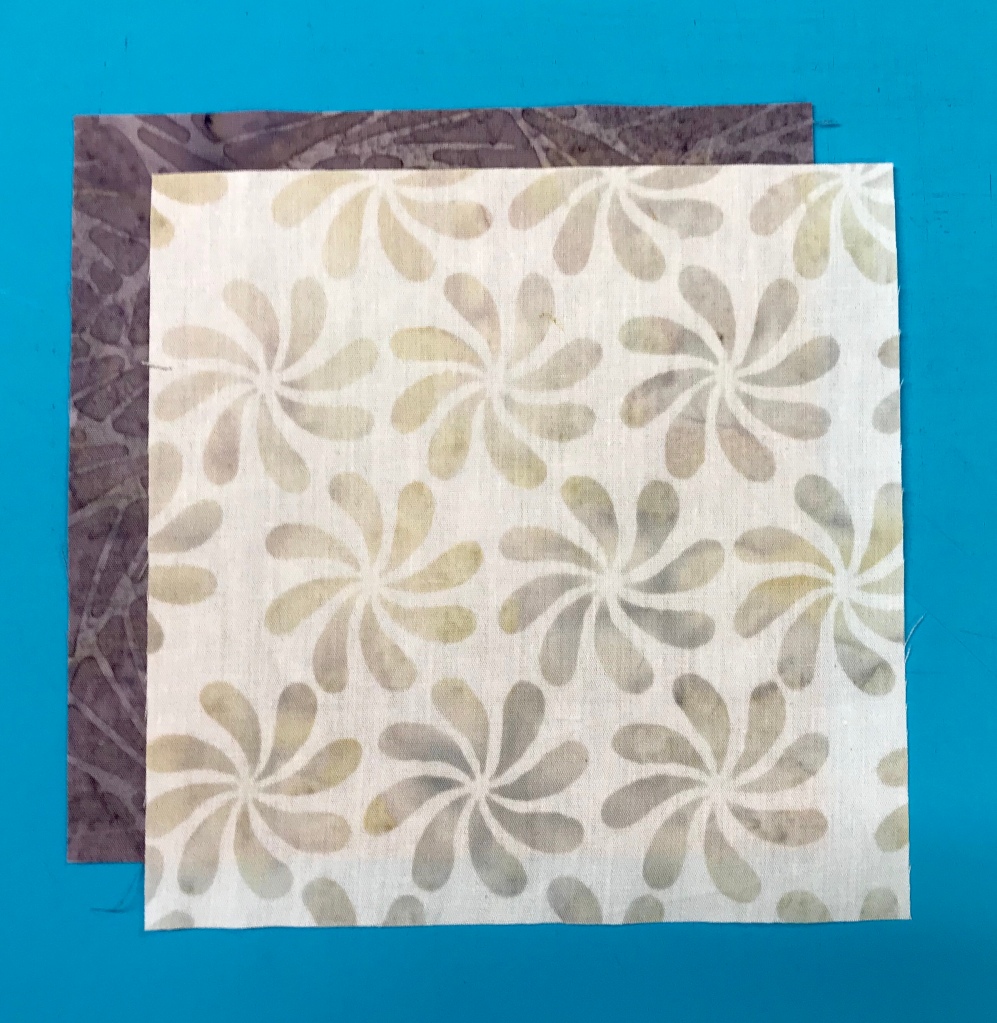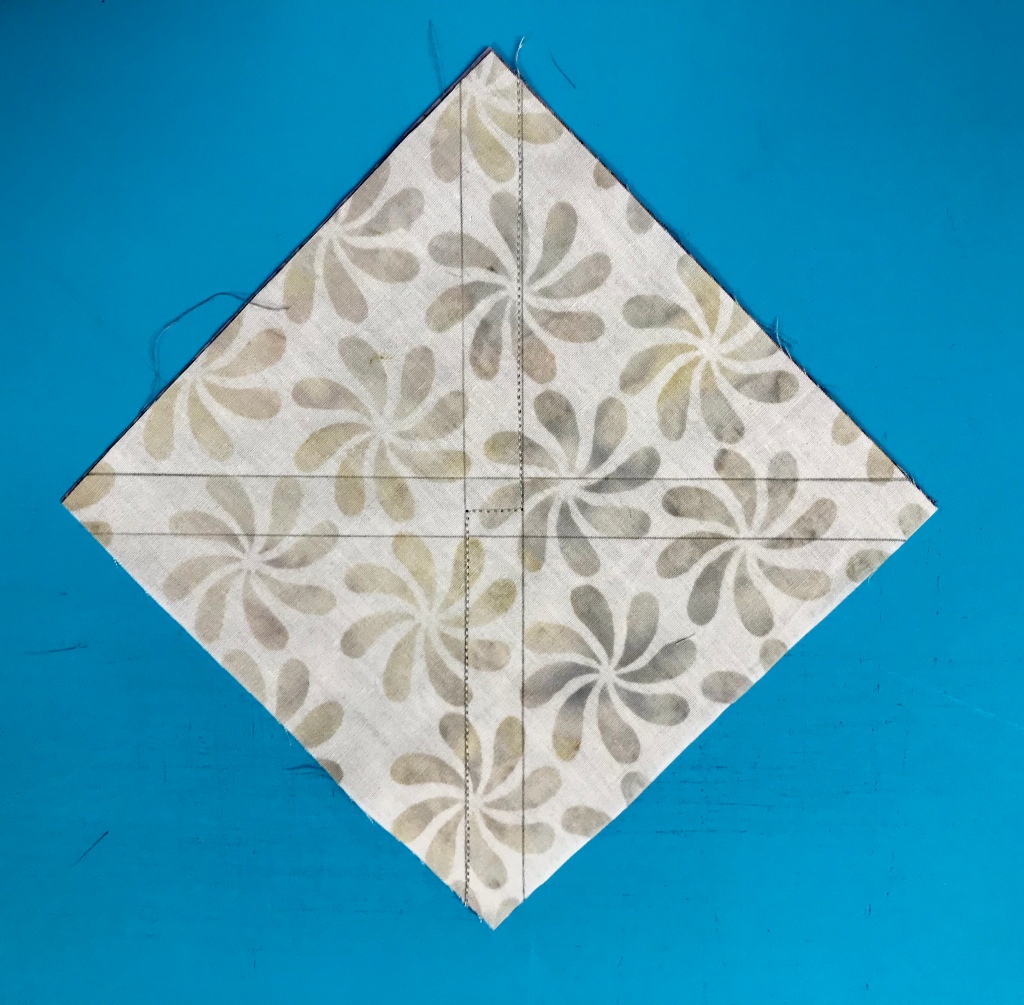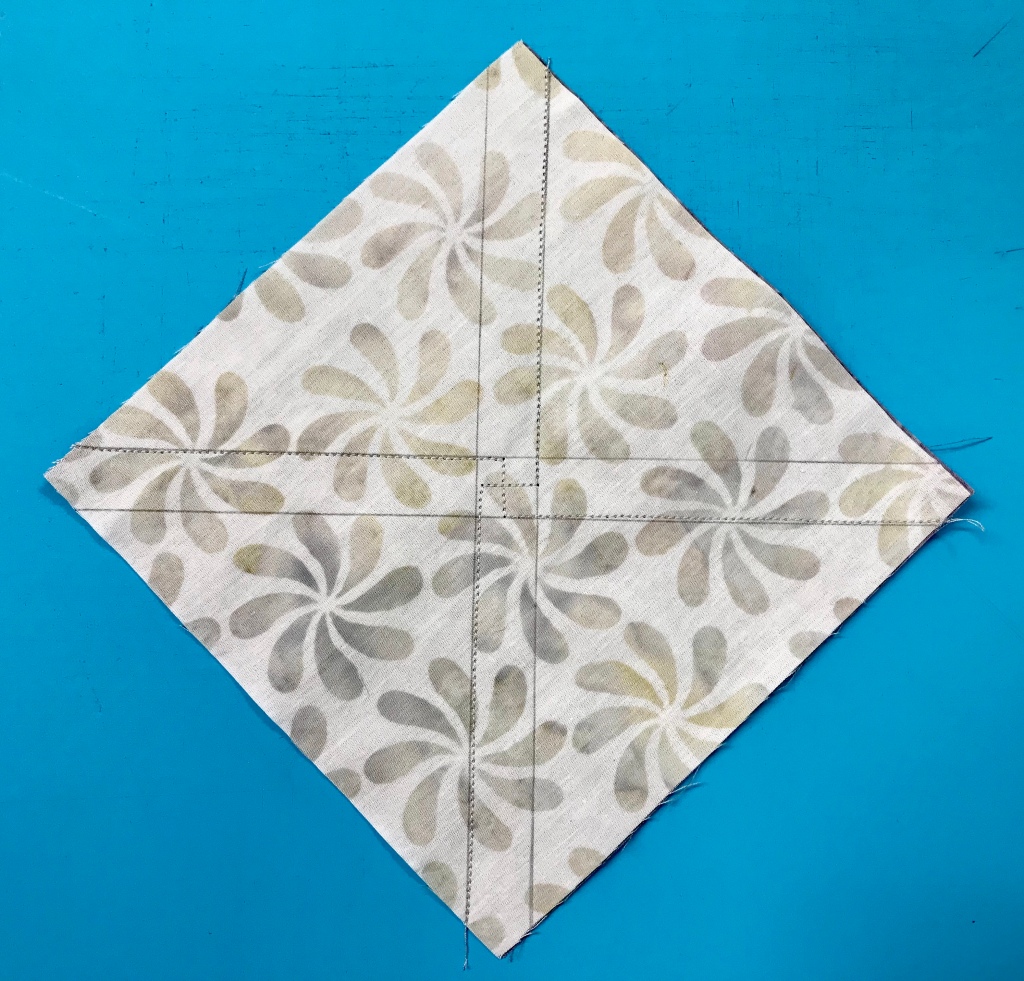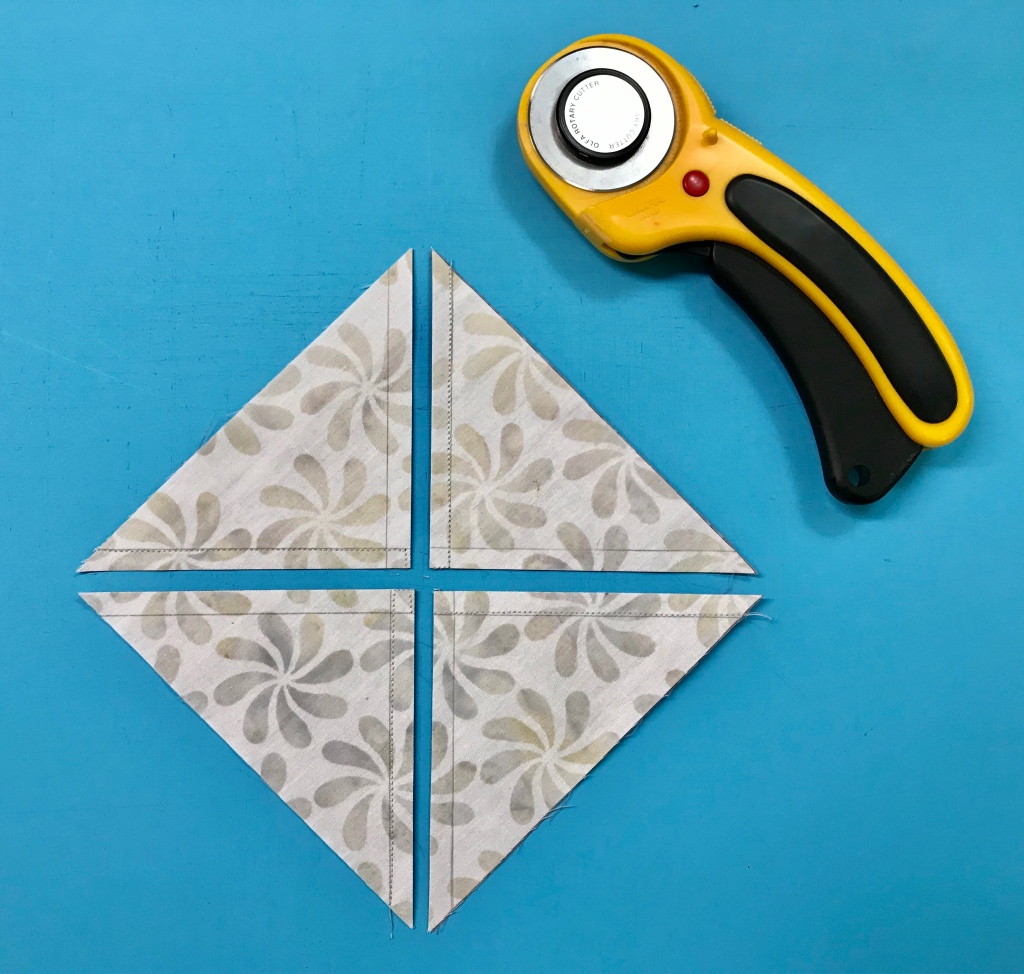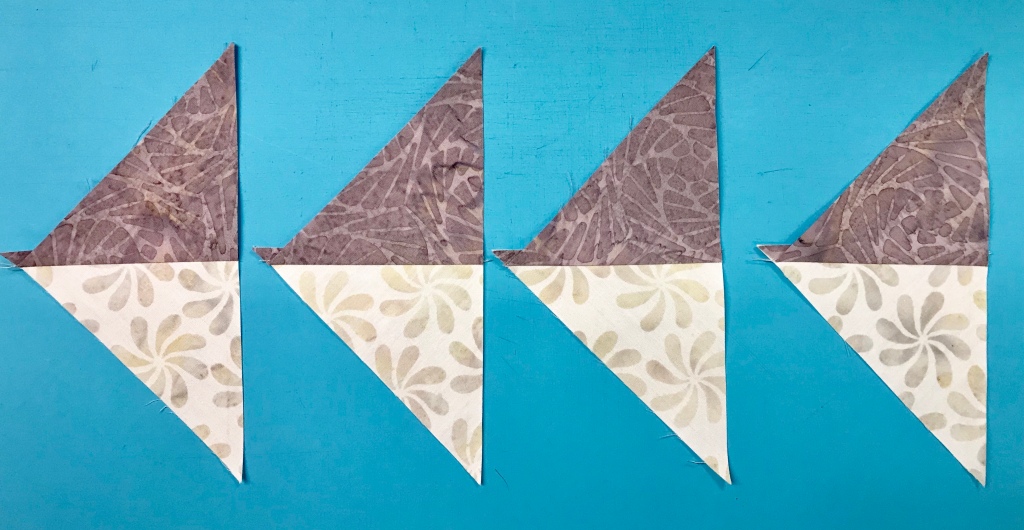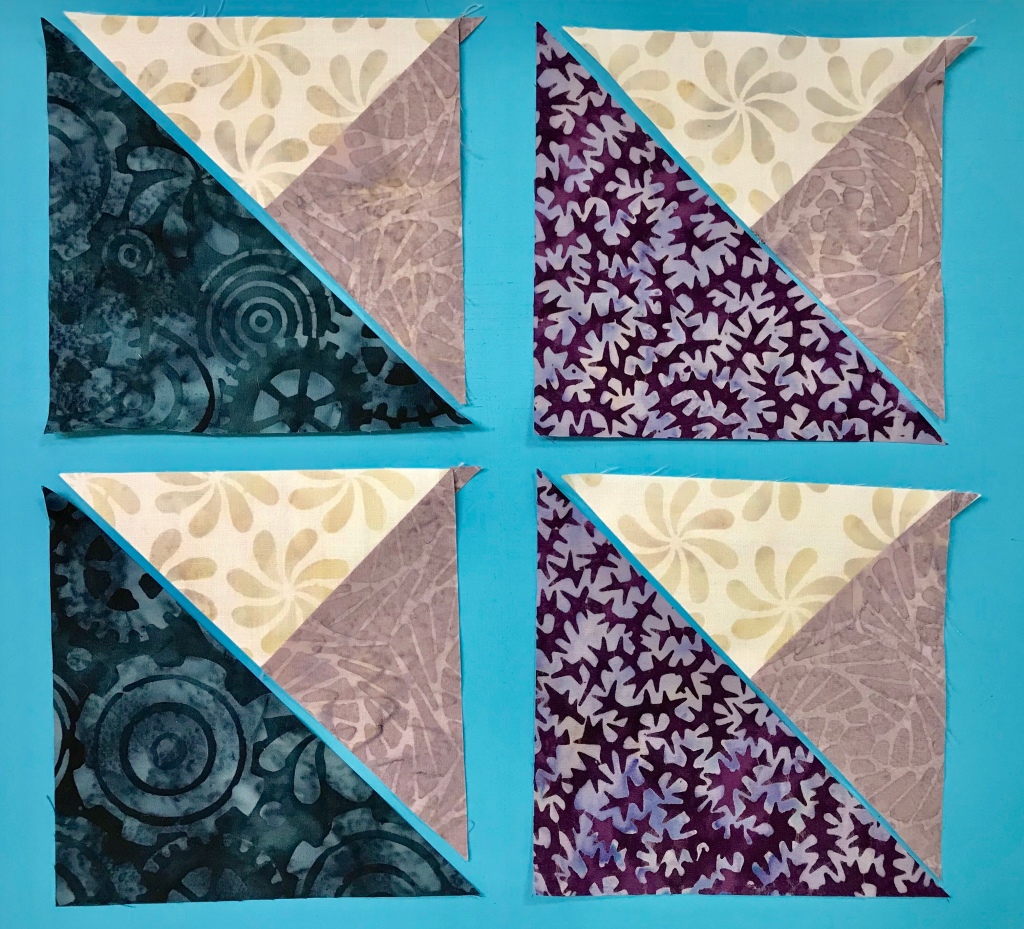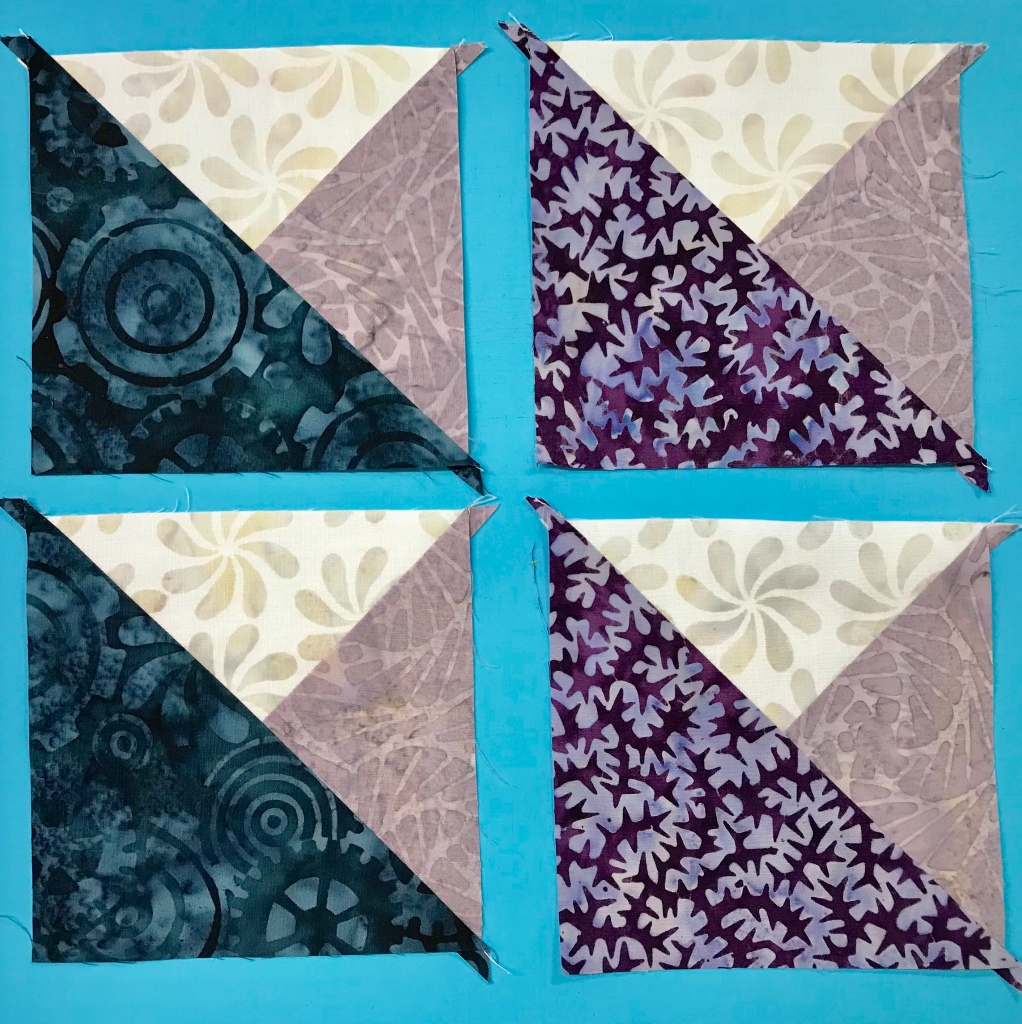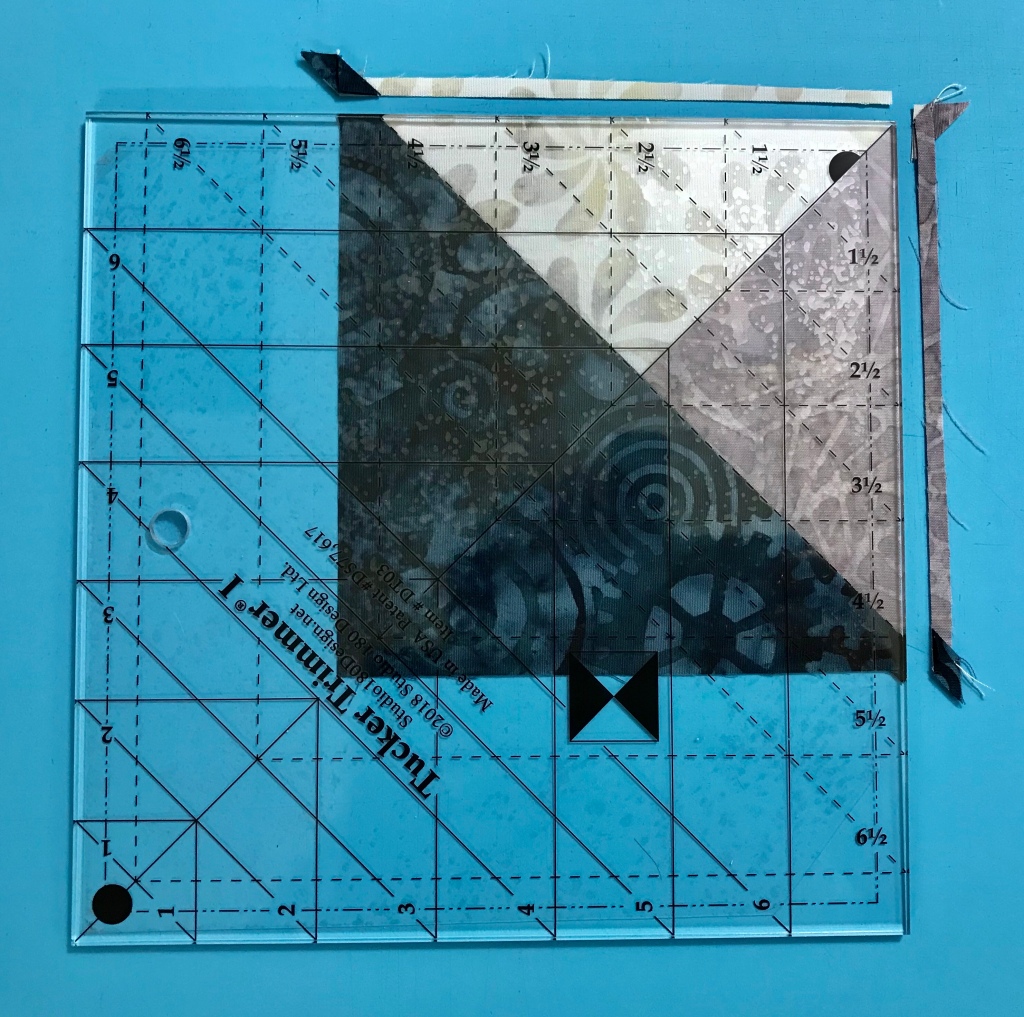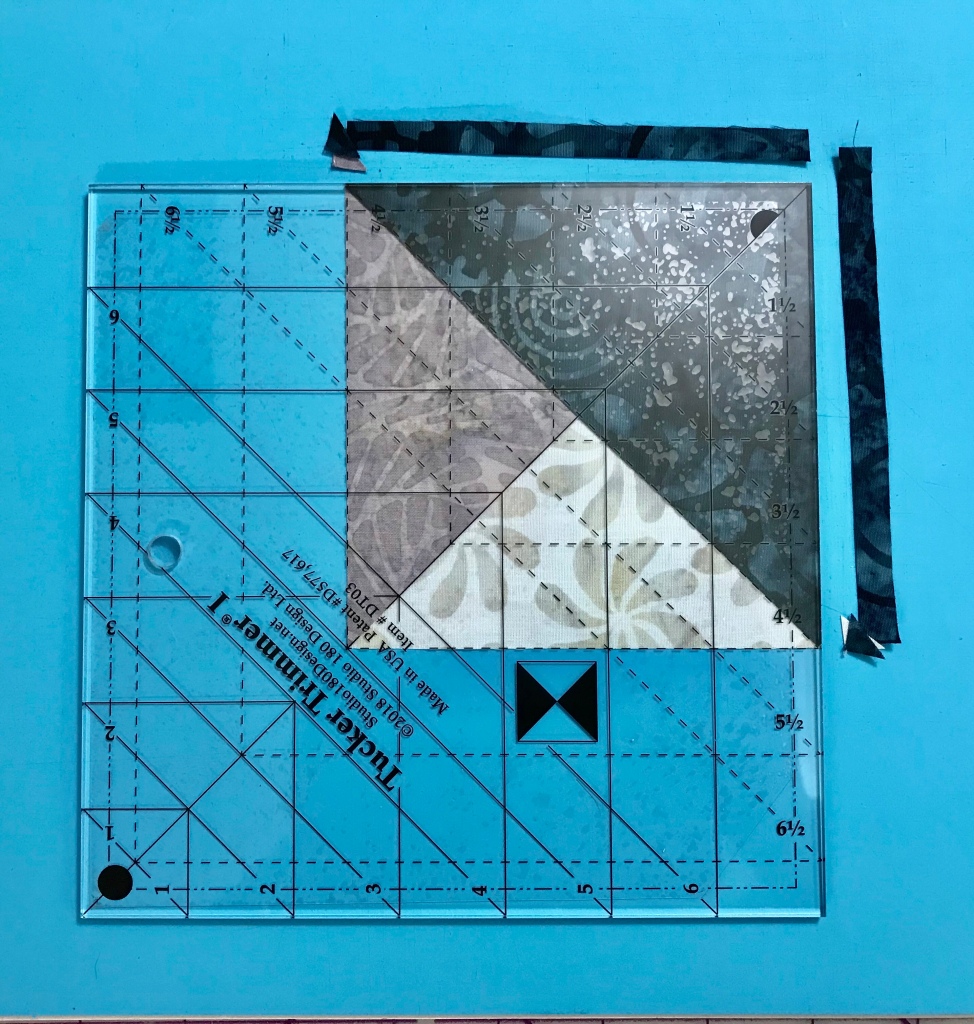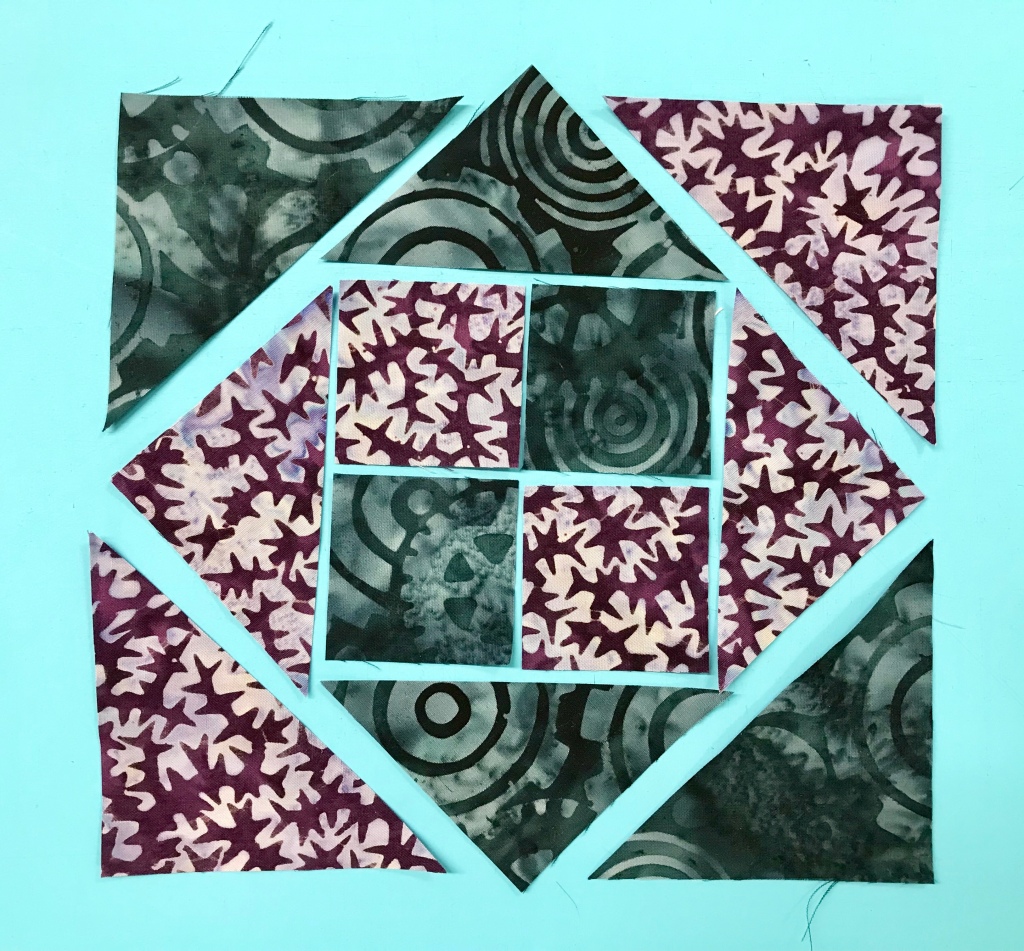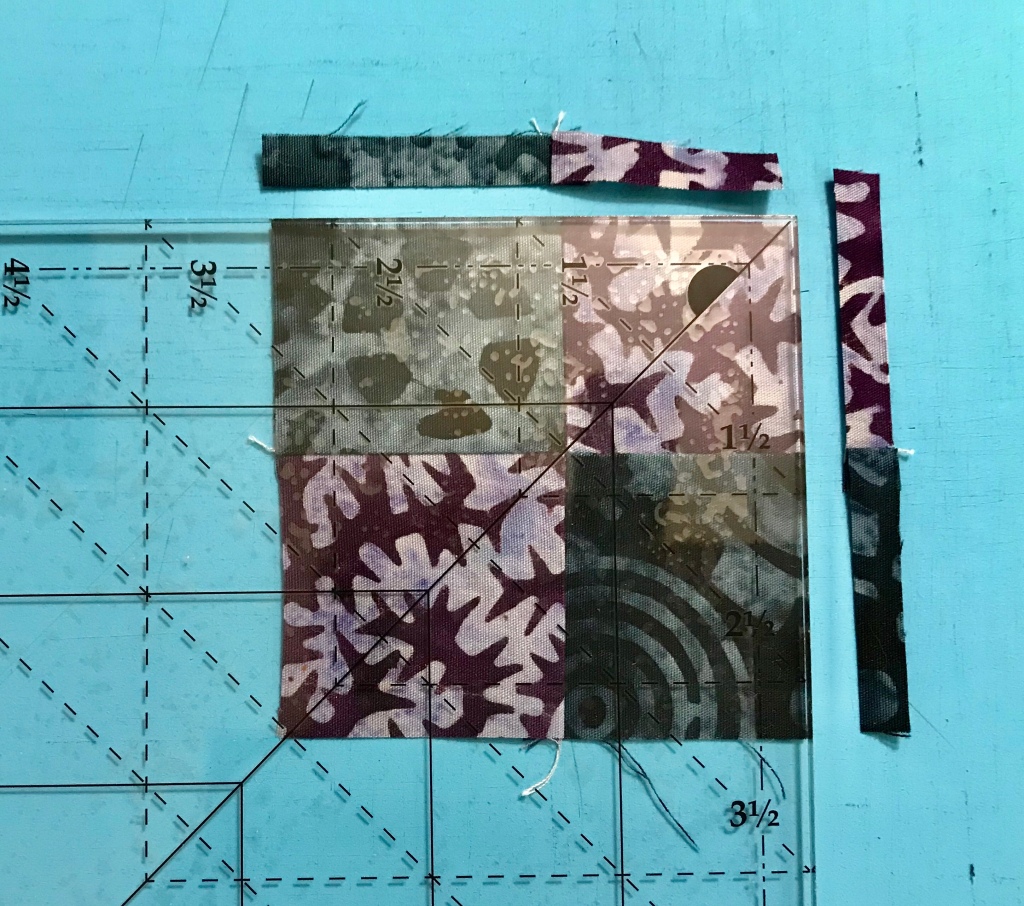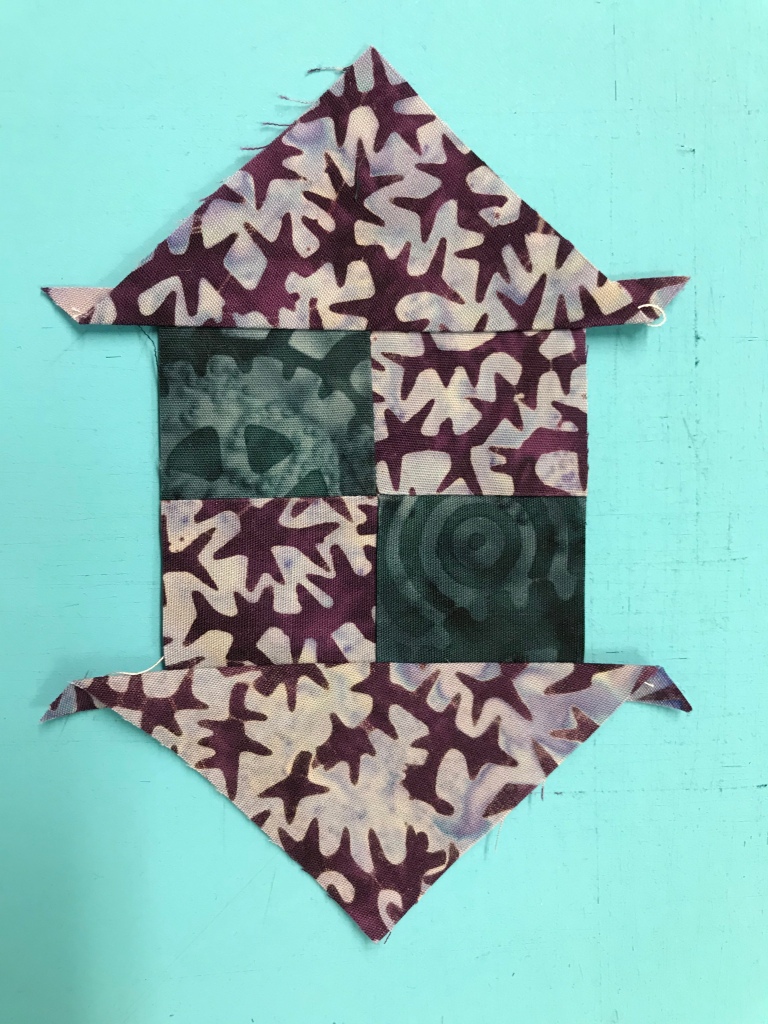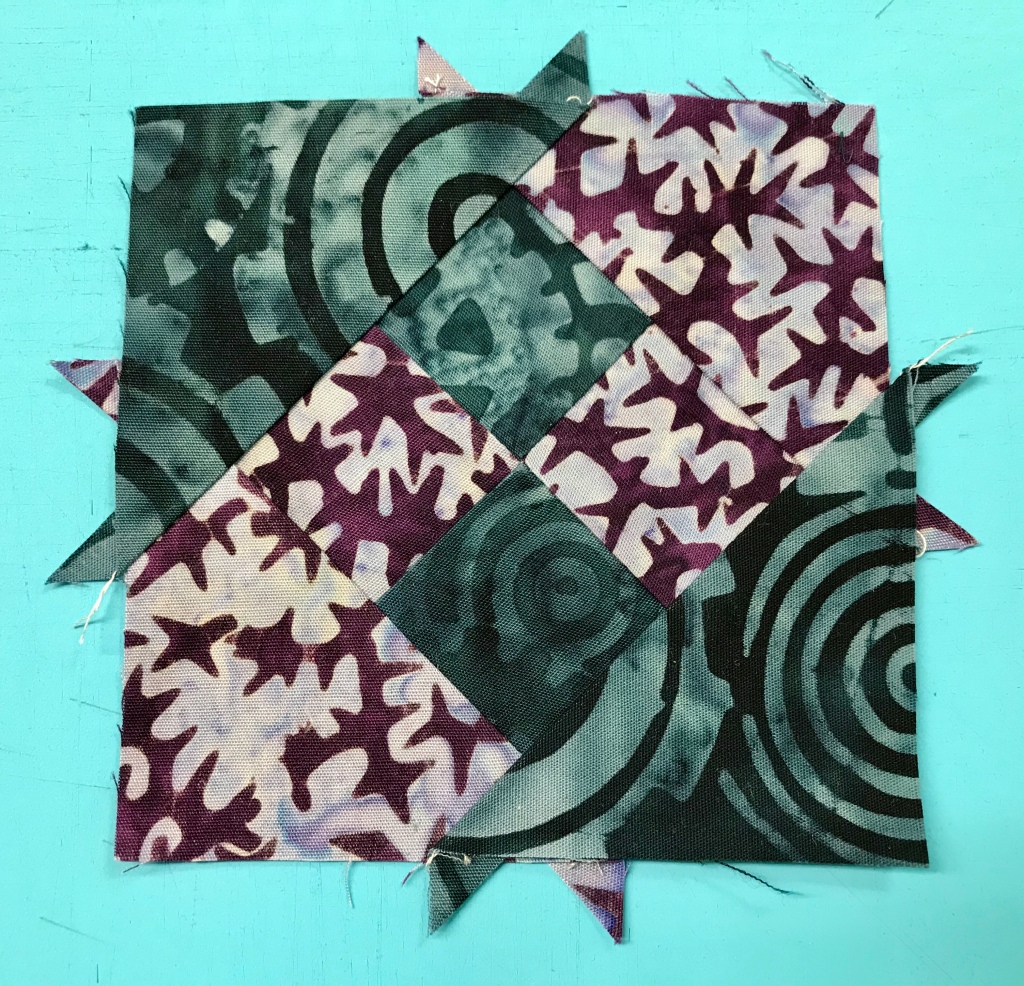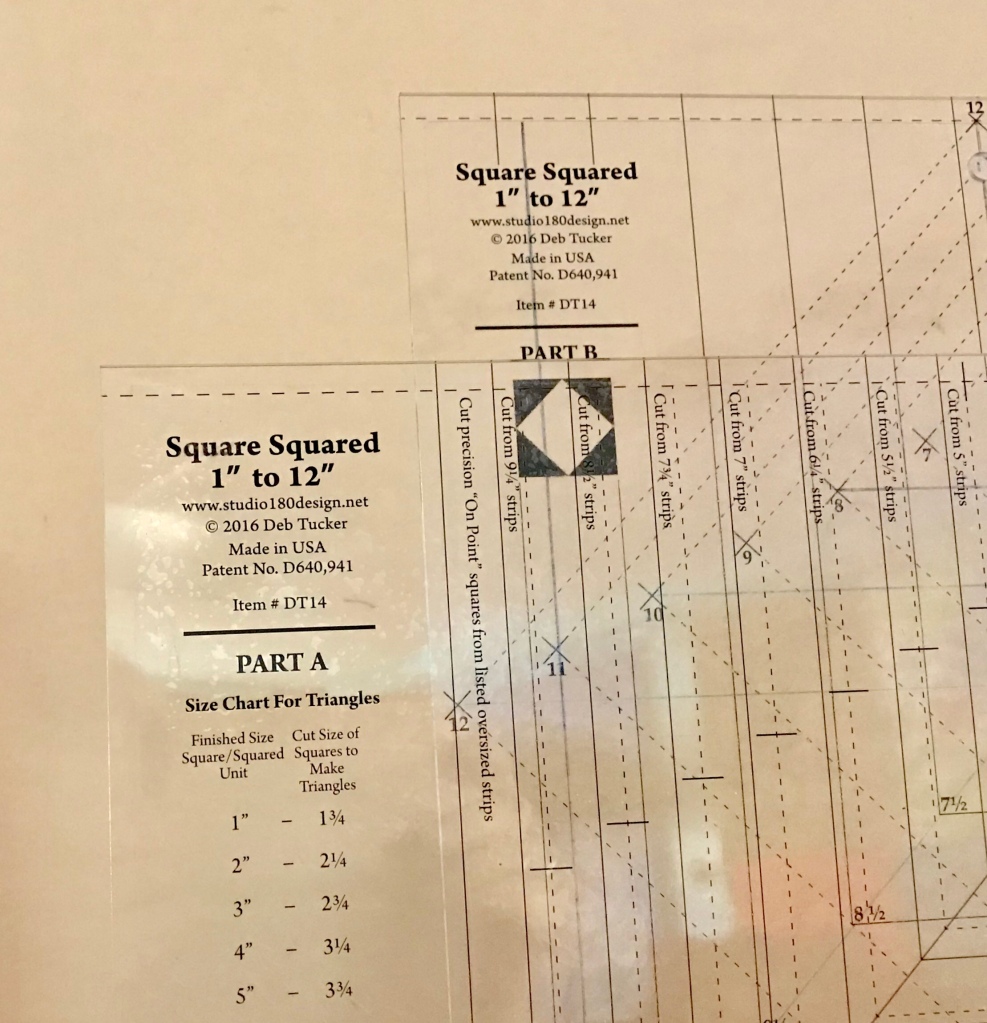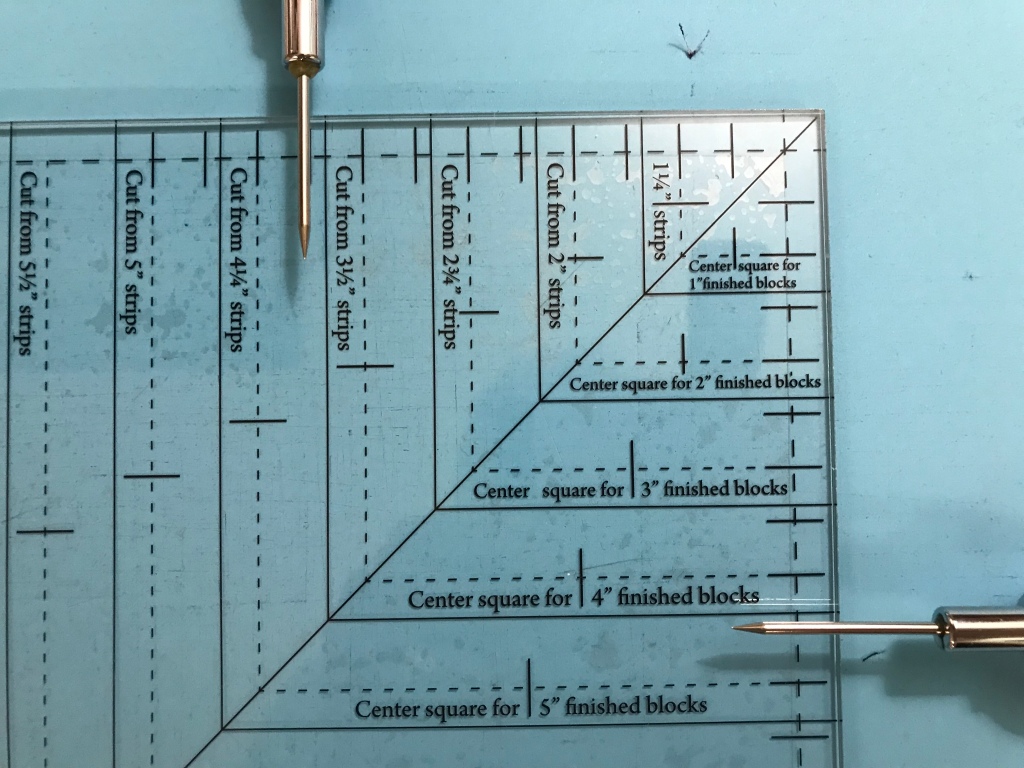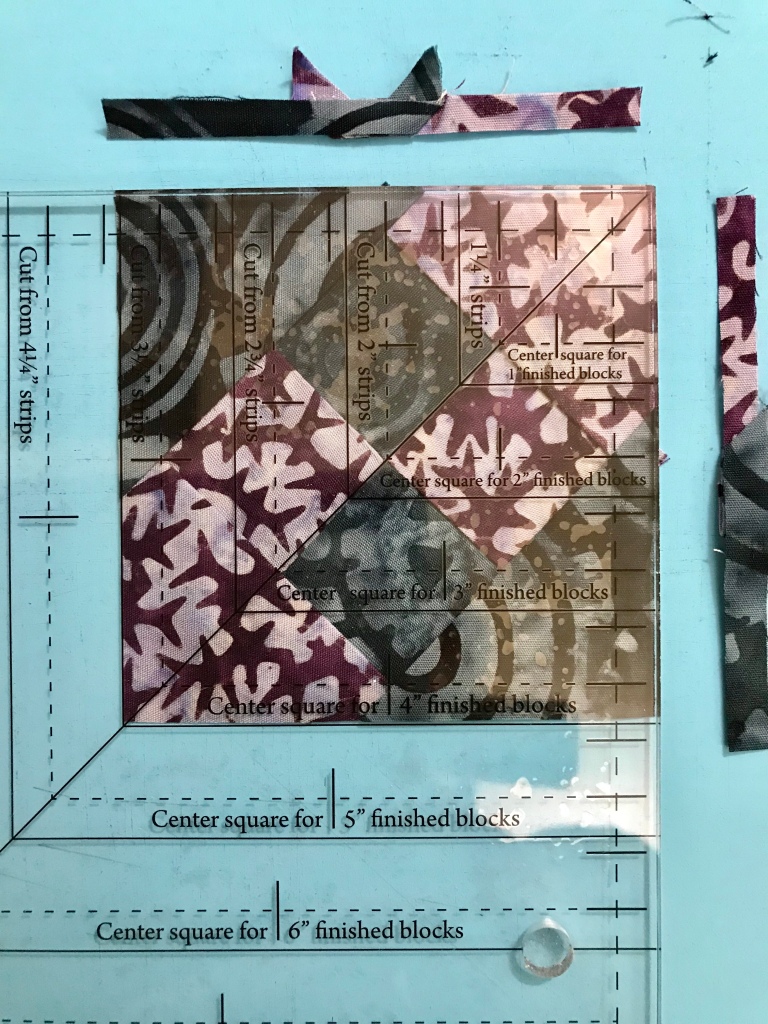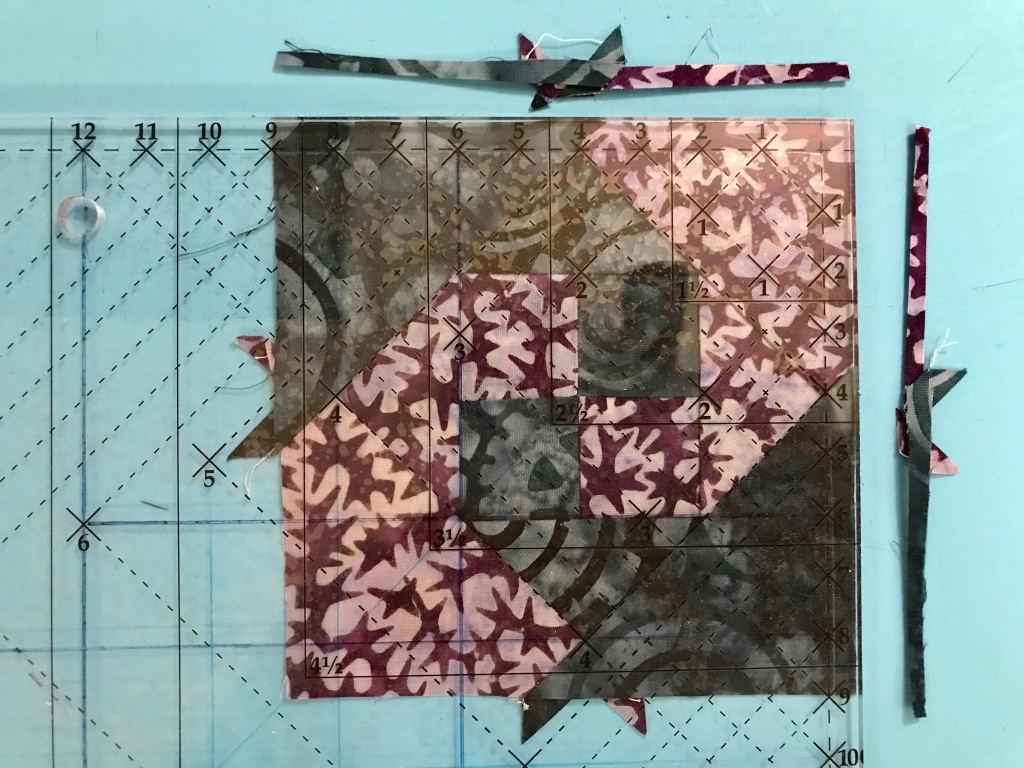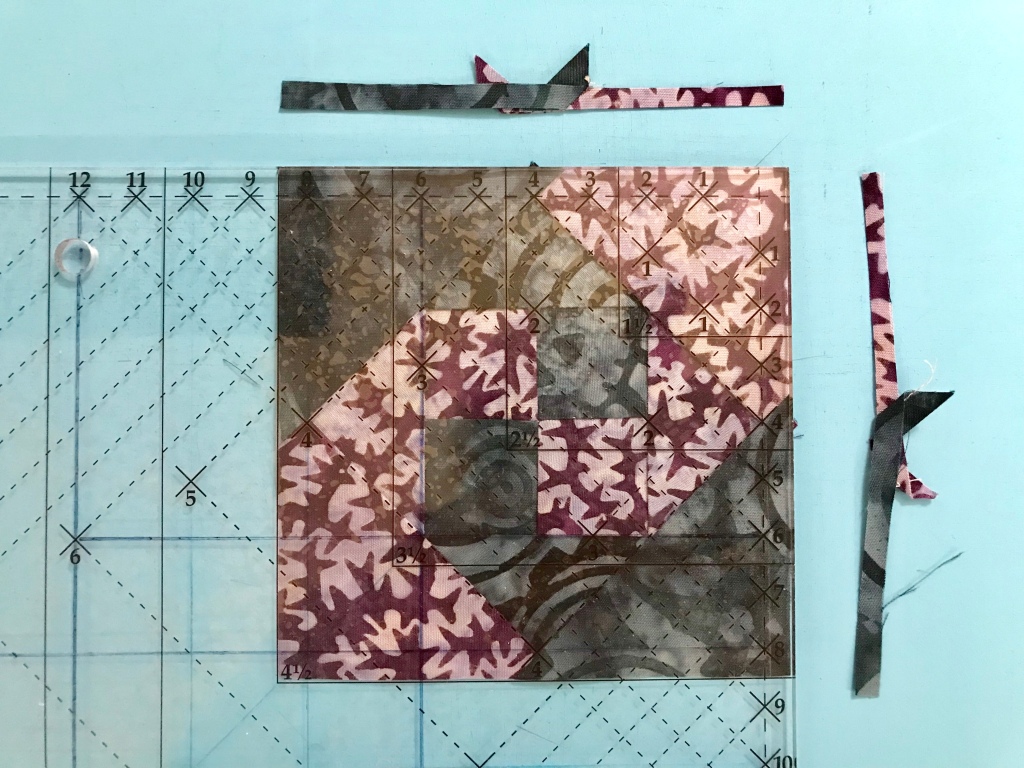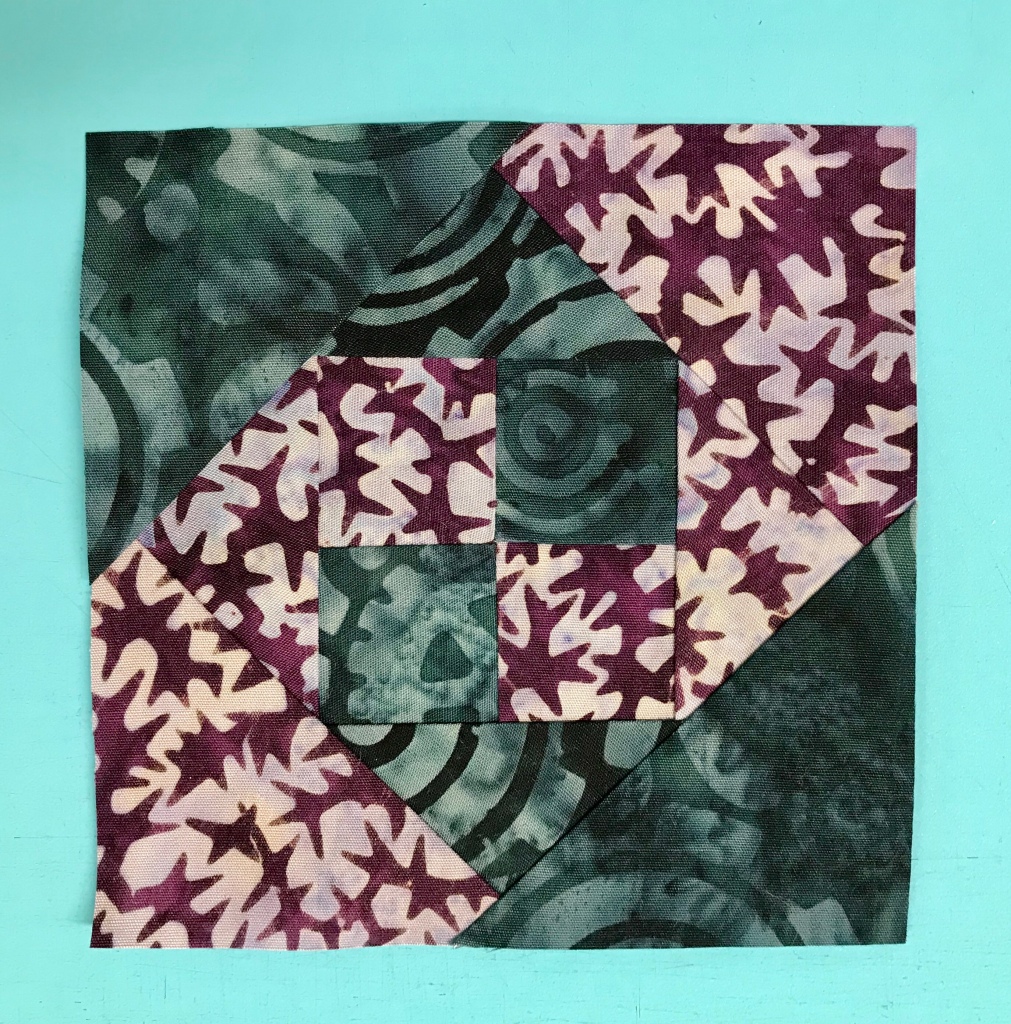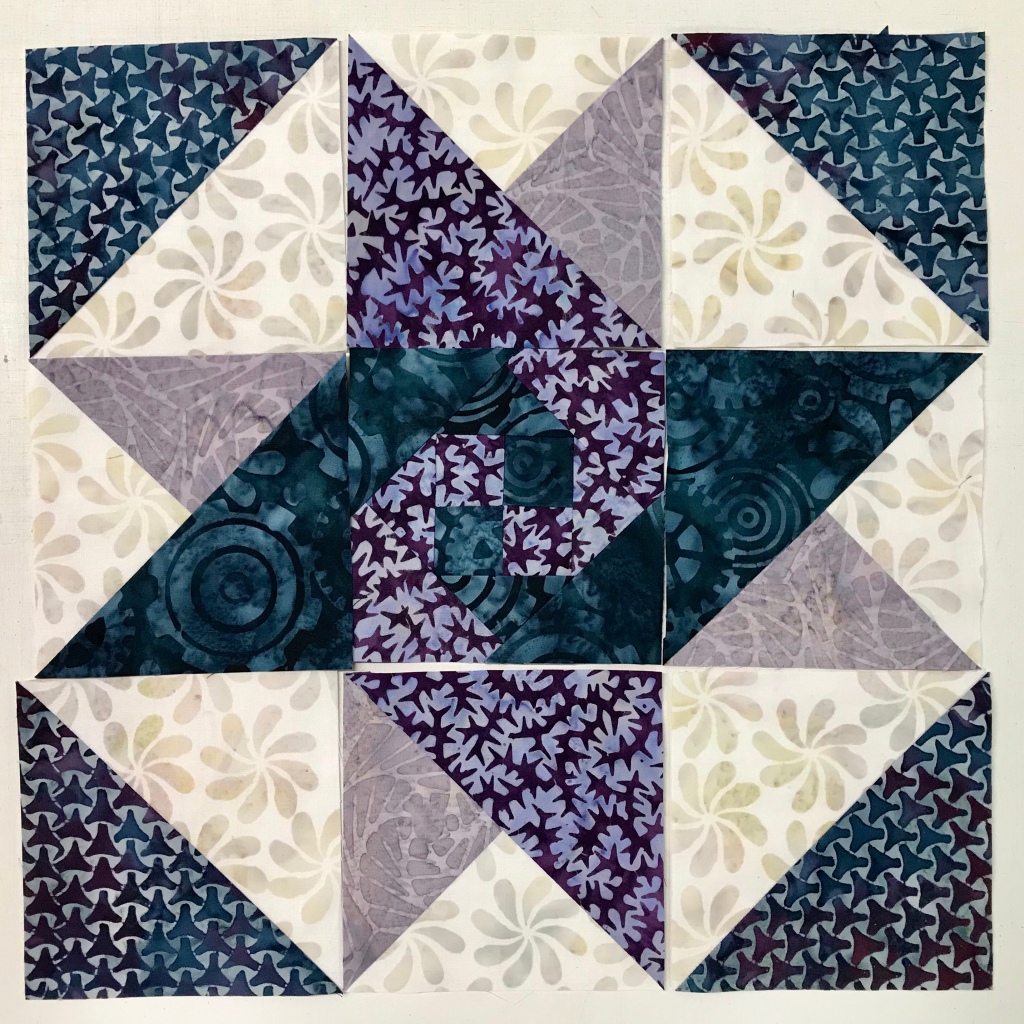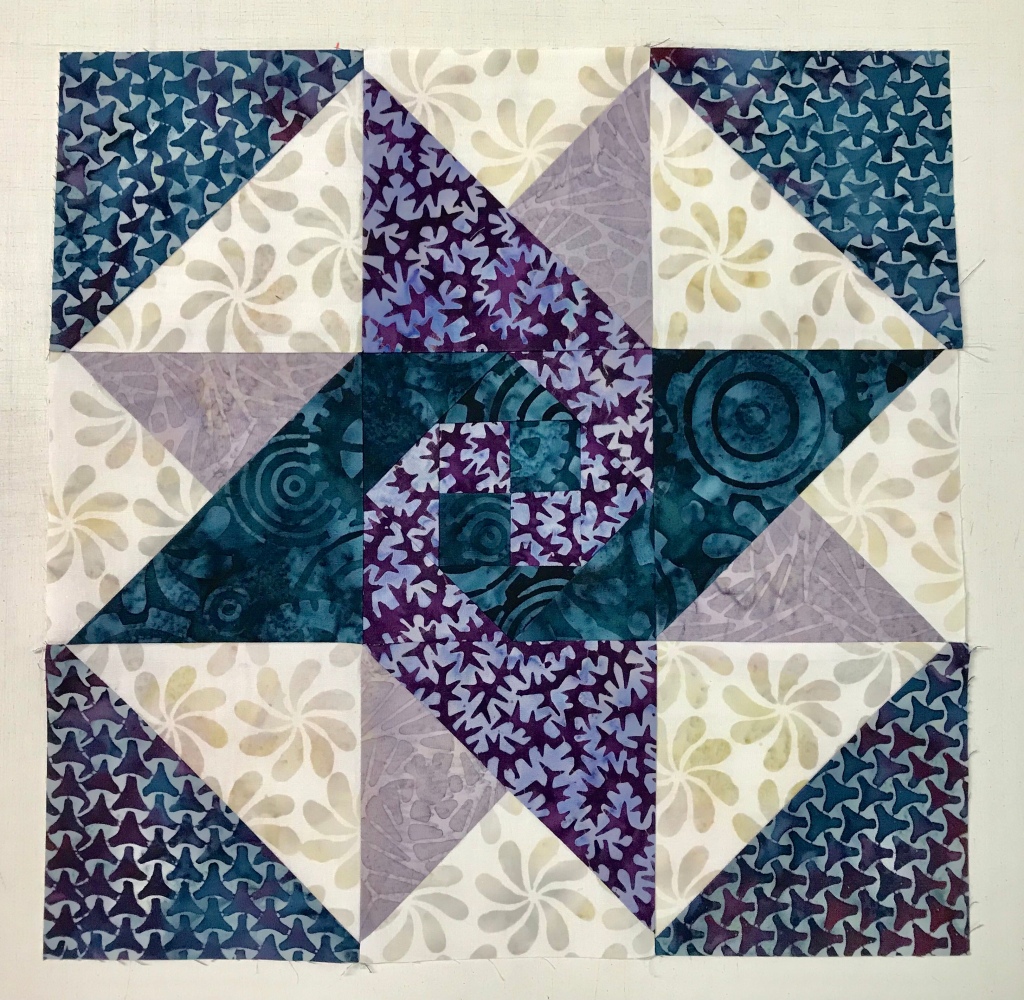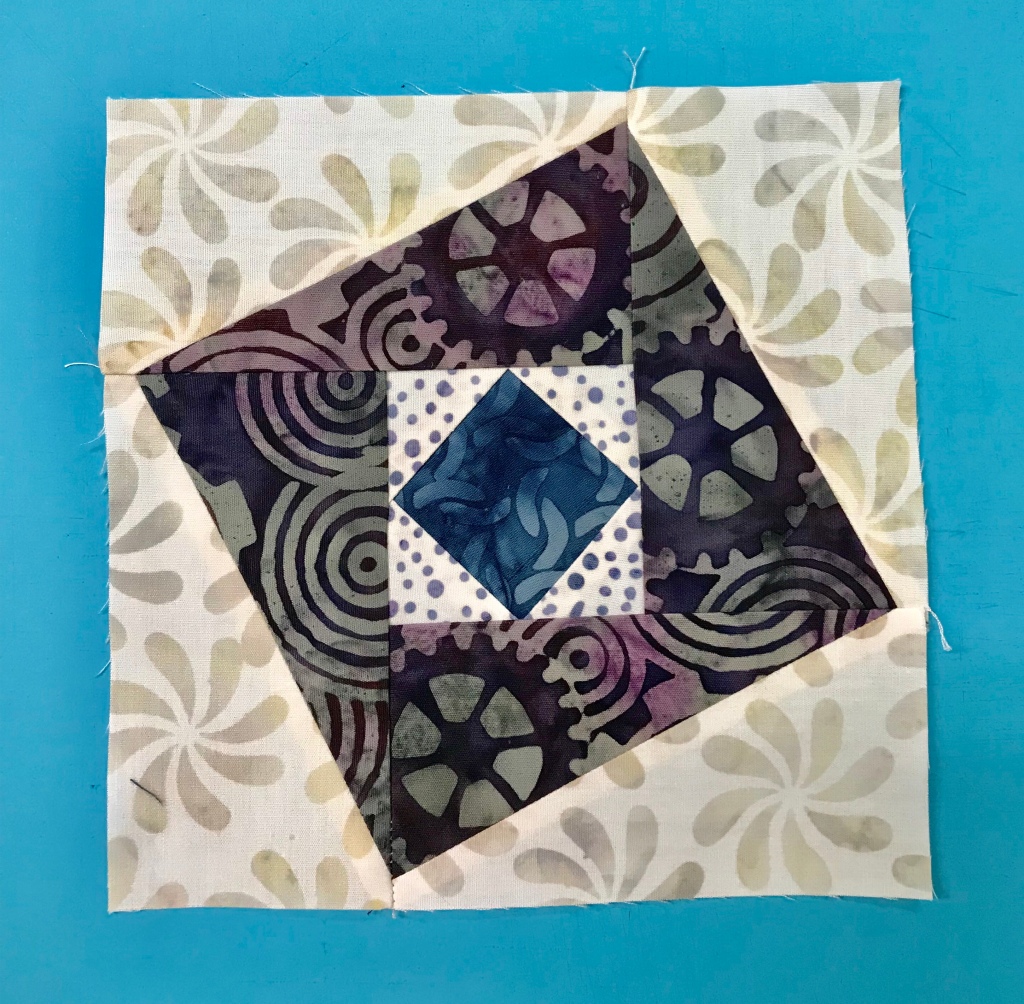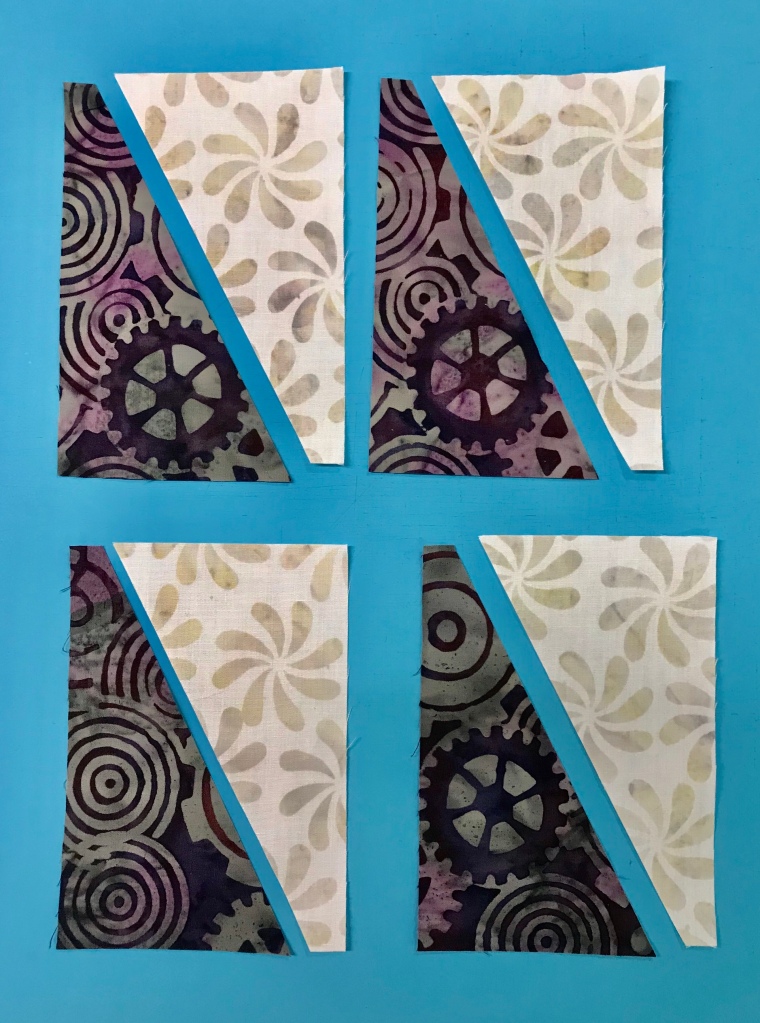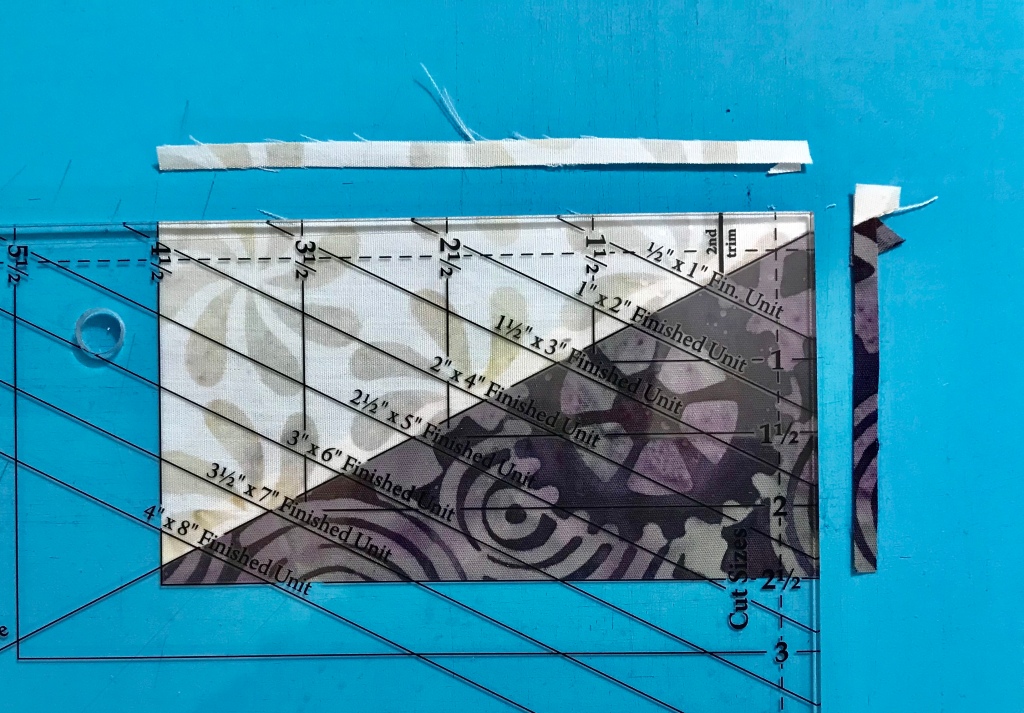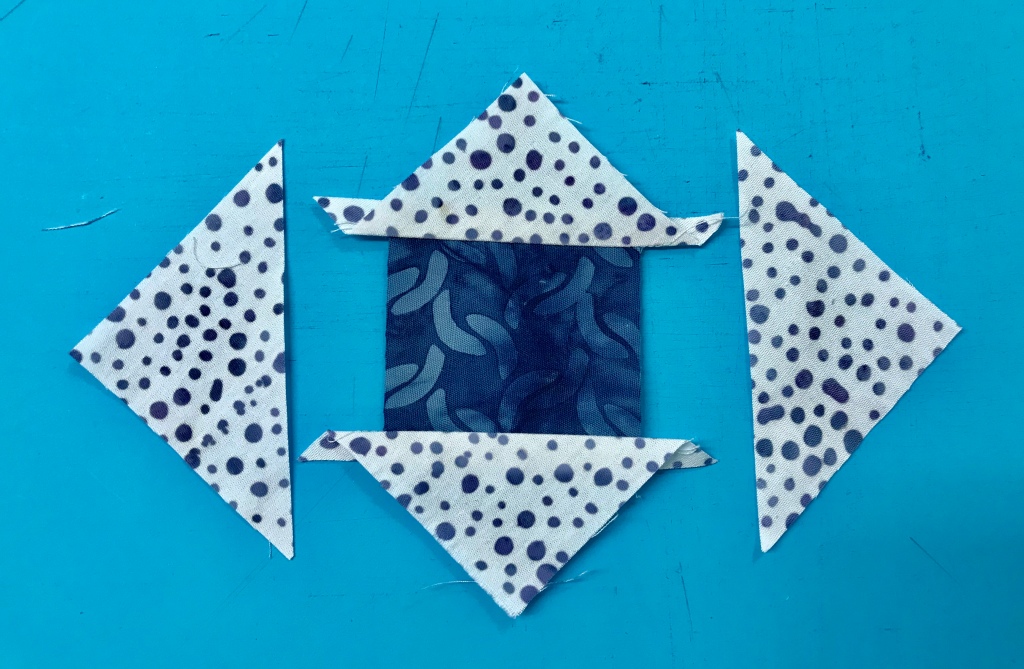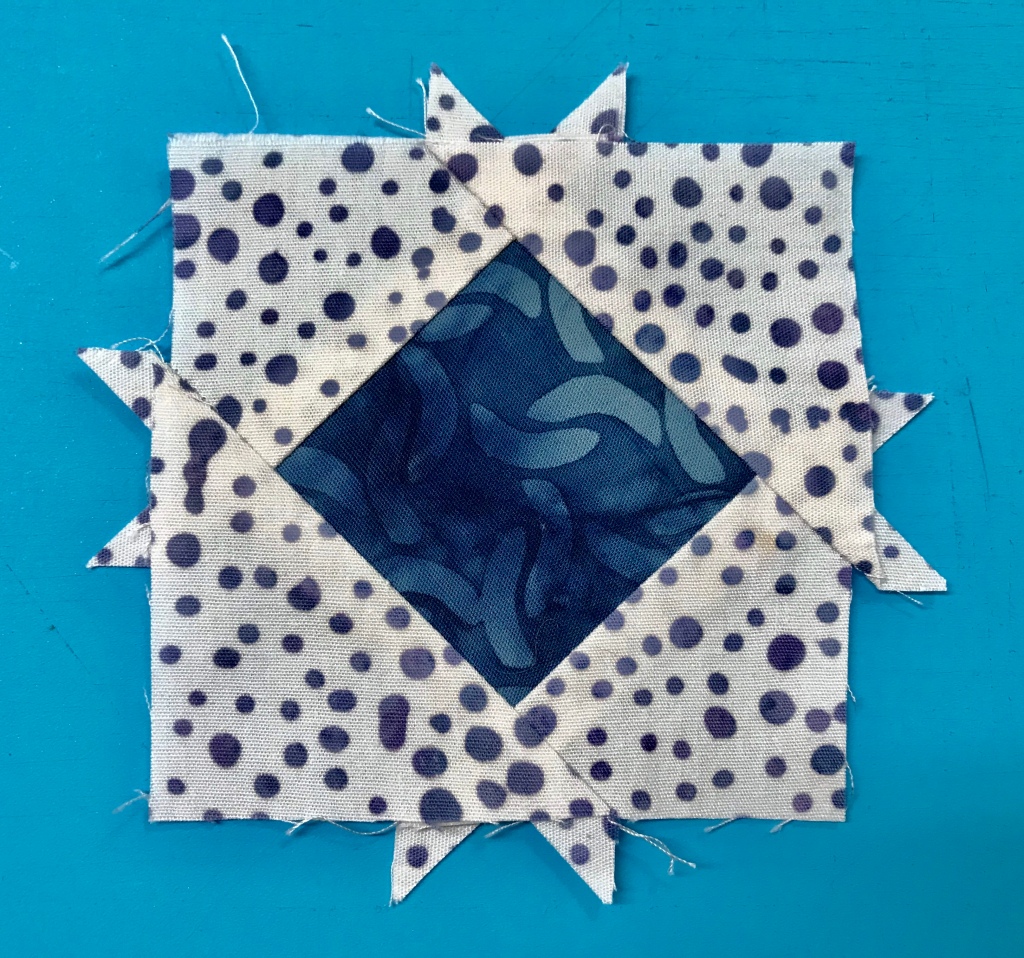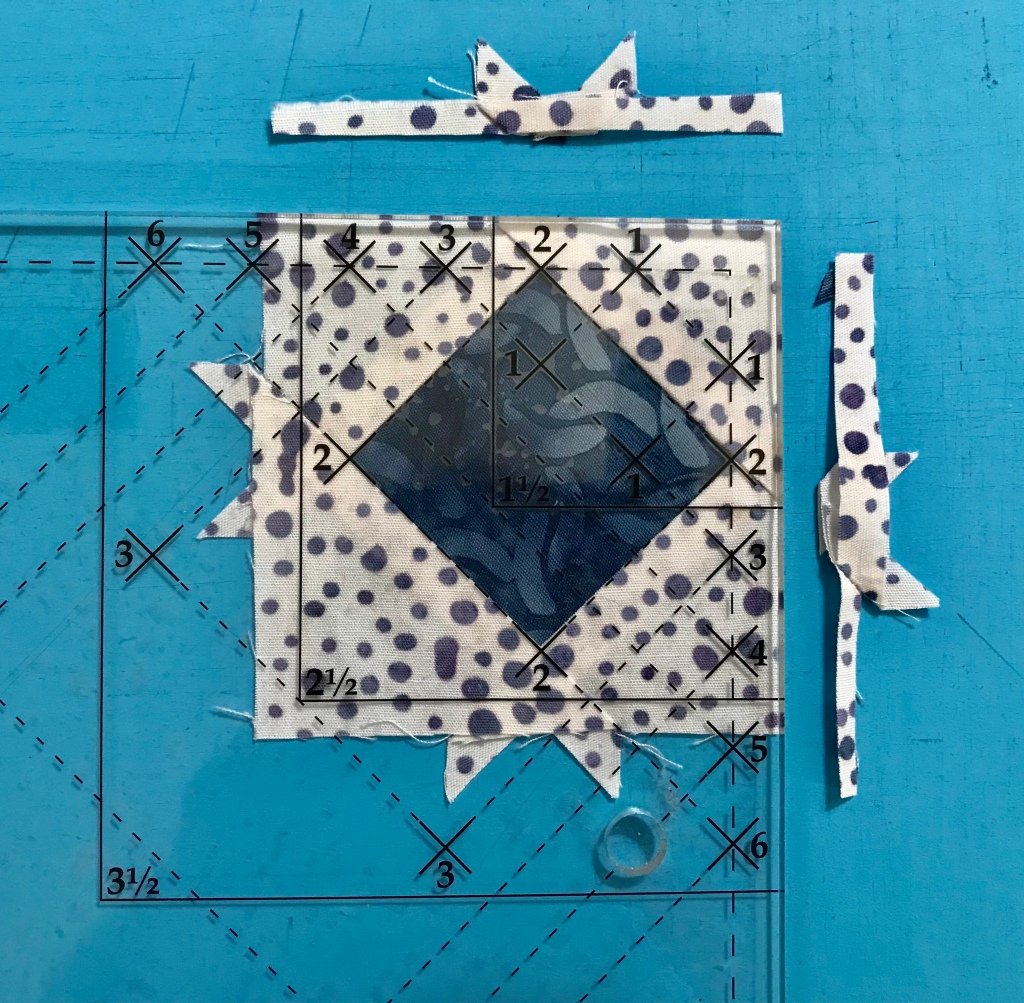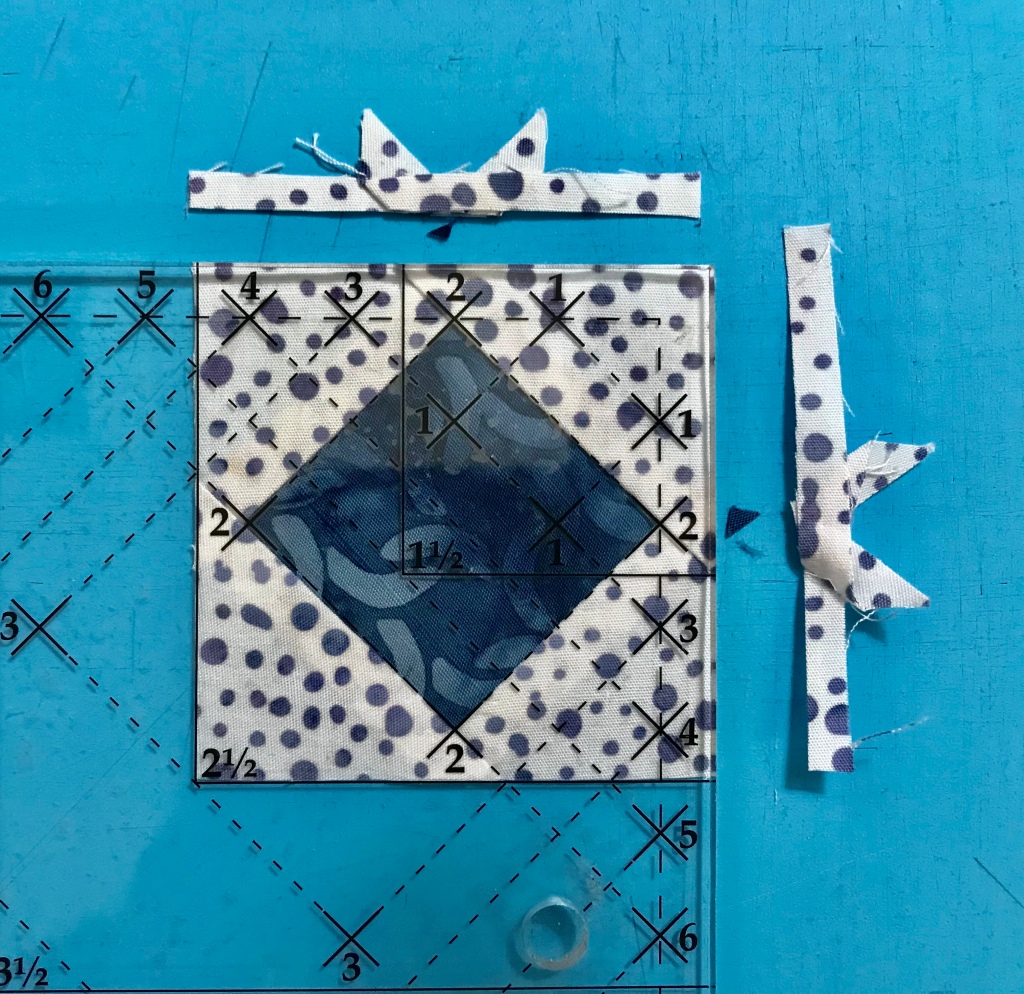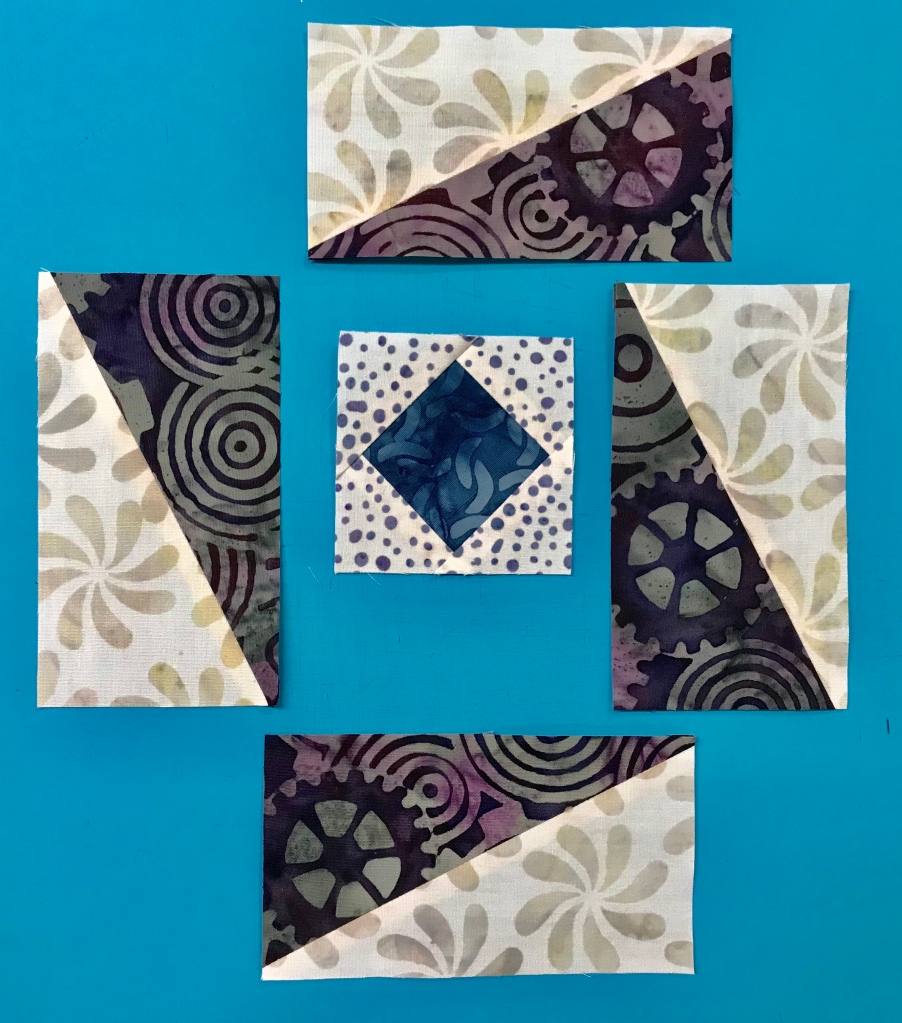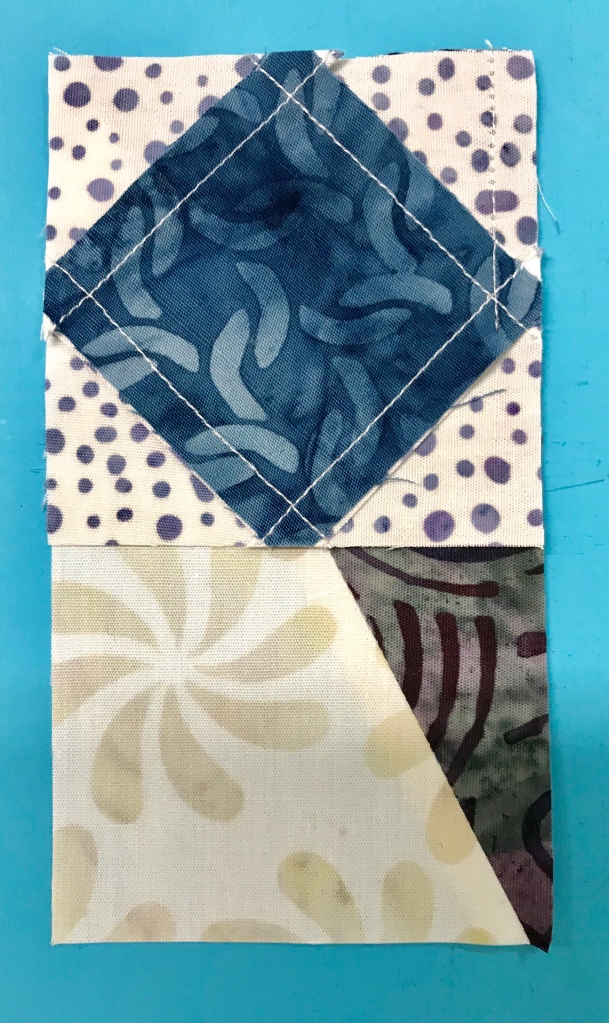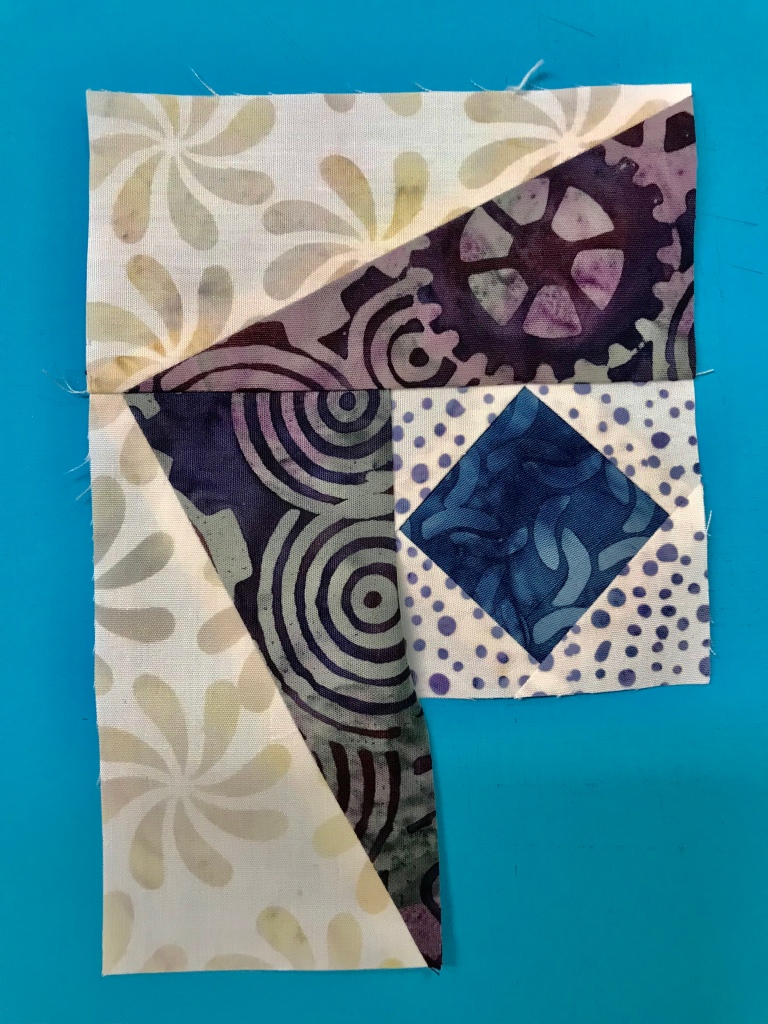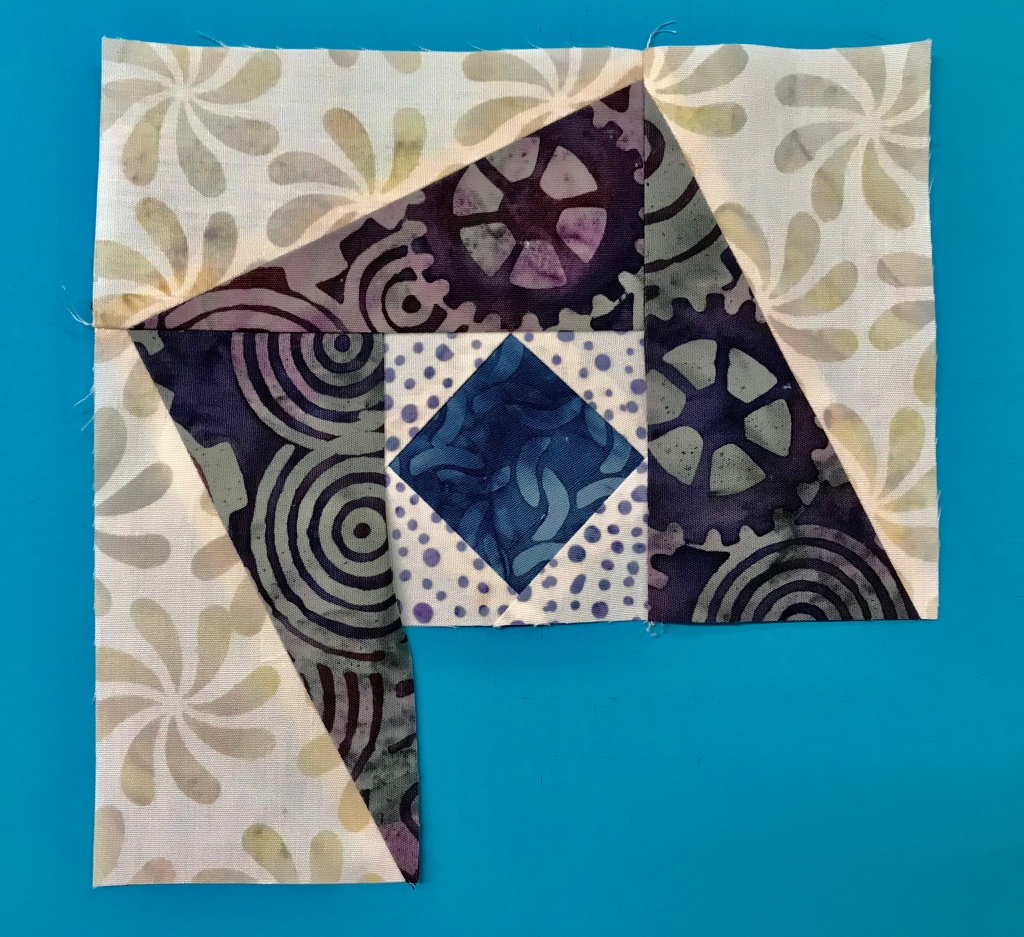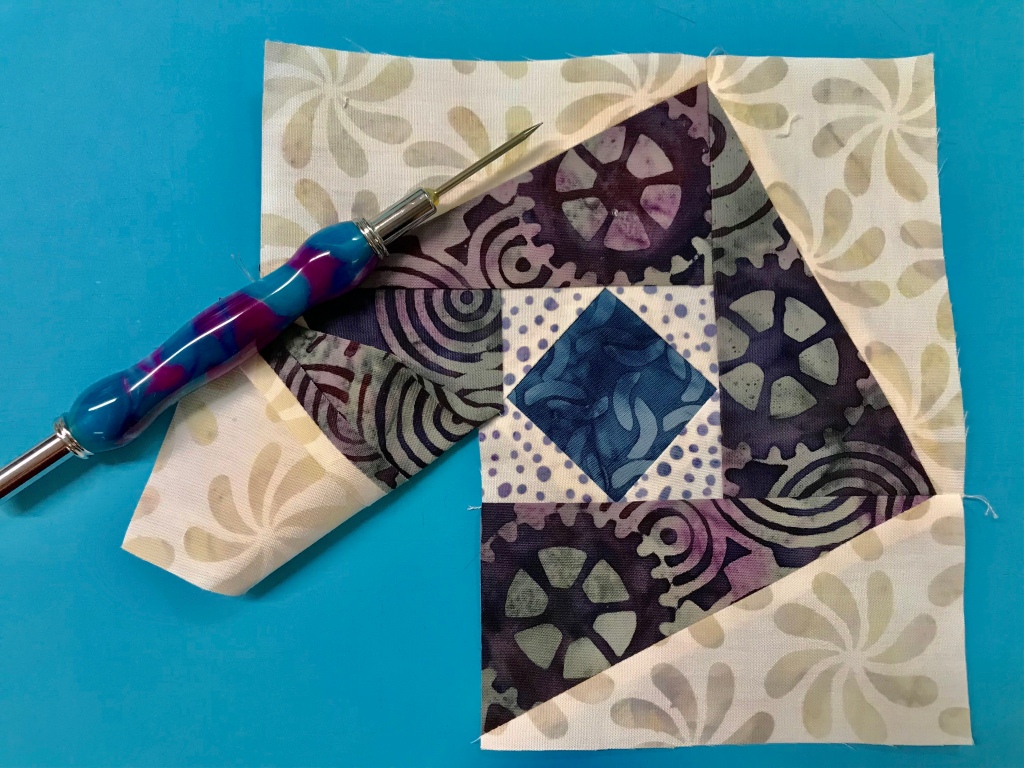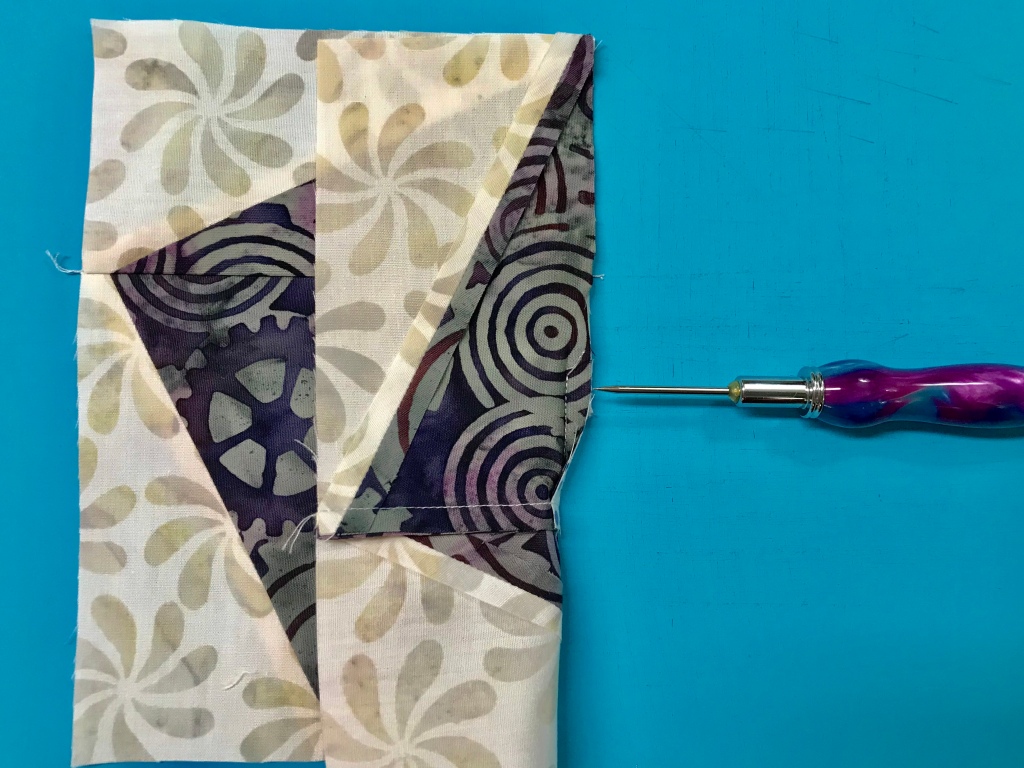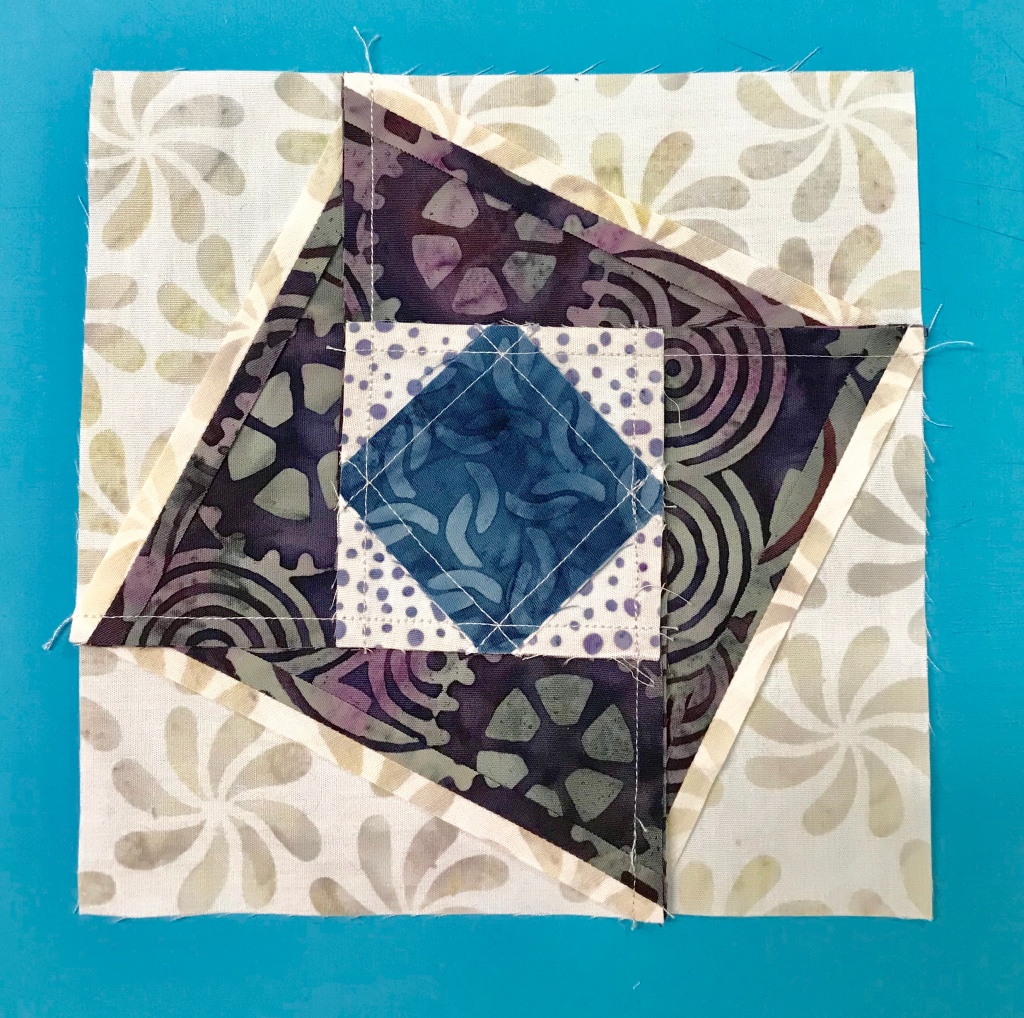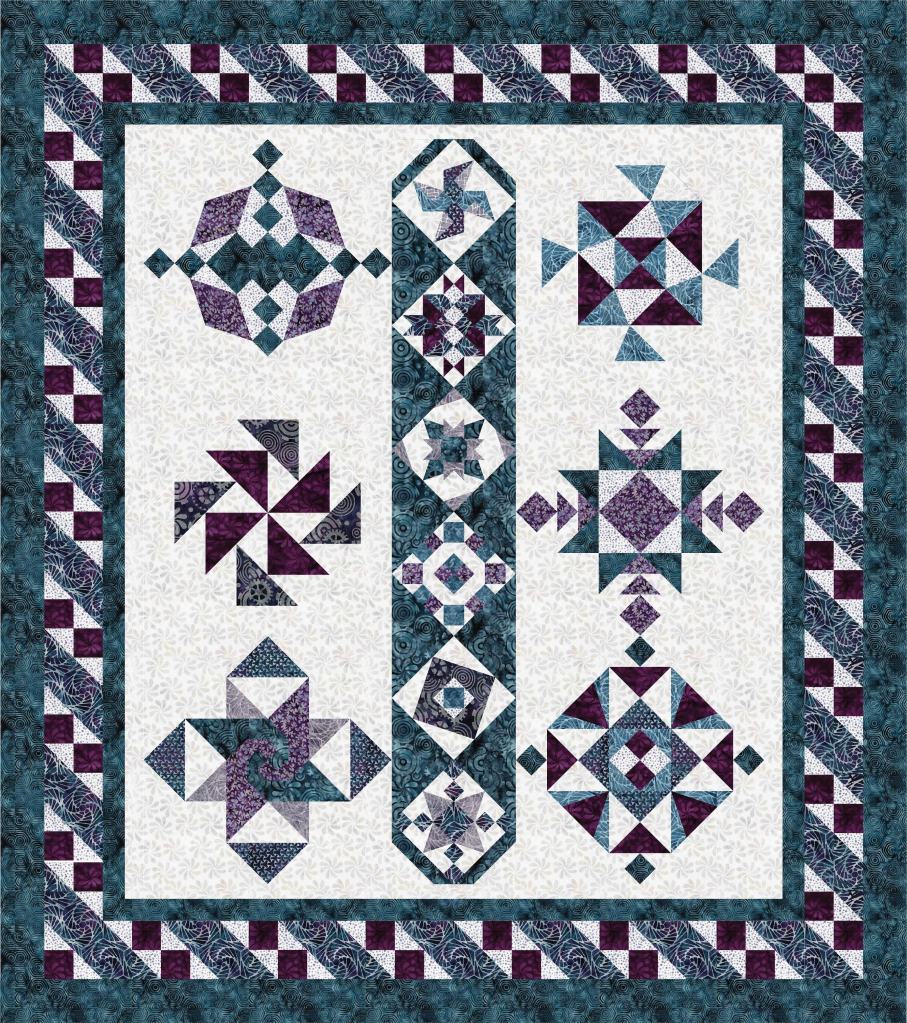I love this block So sweet & easy. All the instructions you will need for BlockBuster # 07 Whimsy Turndash came with your Square/Squared & Tucker Trimmer I tools which are required to make this block. You will also need to reference your Little Houses Technique Sheet.
Whimsy Turndash is made up of 3 different units. Unit A is Square/Squared, one for the block center. Unit B is Little Houses, 4 are needed. Unit C is Half Square Triangles (HST), 4 are needed for the block corners. I made a 12″ finished block containing 4″ finished units.

The Whimsy Turndash supply list (link in the first paragraph above) offers you 3 different layouts and a black line master to play with. I chose 2 colors and a background fabric shown above.

Unit A – Square/Squared: Determine the desired finished size of your unit. Go to the Center Square Section on your Square/Squared Tool. Mine finished size is 4″, The Center Square Sections tells me to cut a strip 3 1/2″ wide.

I already trimmed off the selvage of my 3 1/2″ strip. Place the line for 4″ finished units on the bottom of the strip up against the trimmed end. Trim up the left side and across the top. You now have a perfect precision cut center square for your unit.

On your Square/Squared tool find the Size Chart for Triangles. For 4″ finished units I cut two 3 1/4″ squares and cut them once diagonally.
Center a side triangle over the center square and stitch. Center another side triangle to the opposite side of the center square and stitch. Press toward the side triangle.
Center another side triangle as before and stitch, repeat on the opposite side so all sides of the center square have a side triangle stitched to it, press toward the side triangle.
Position the Trim Down Section of your Square/Squared tool over the pieced unit. Focus on aligning the “X’s” for your particular finished size unit. Mine is 4″ finished, so there is a 4 at each corner of the center square. Trim up the right side and across the top. Check your tool instructions for Left handed cutting tool position.

For the second cut Lift your tool & rotate your unit. Position the tool lining up the “X’s” again and lining up the cleanup lines on the tool with edges previously trimmed. Trim up the right side and across the top.

Unit B – Little House: You will need to make 4 Little Houses. Each little house is made up of 3 squares, one large and two small. For a 4″ finished unit cut four 4 3/4″ squares and eight 2 3/4″ squares.
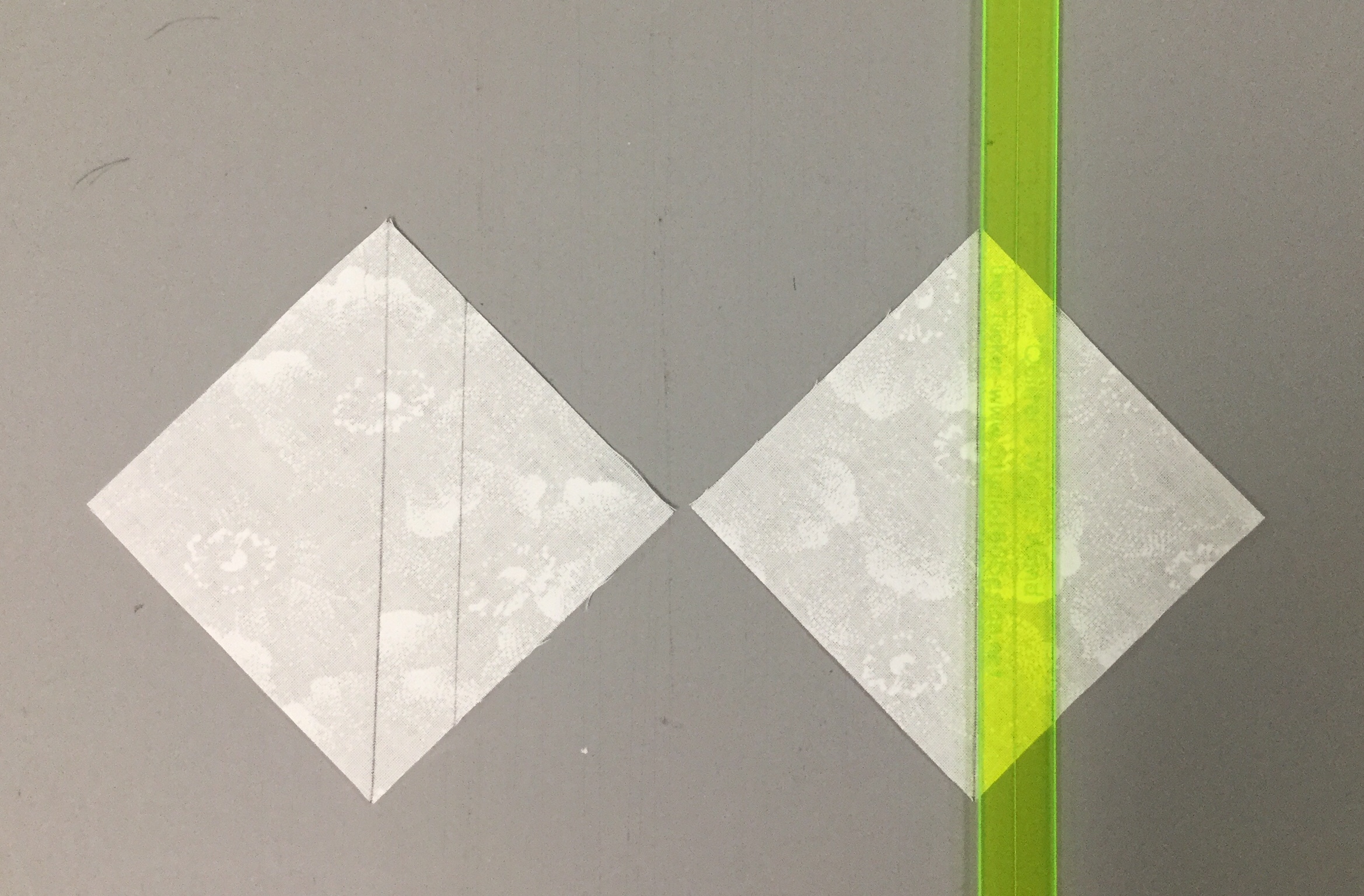
Begin by marking a diagonal line on the back of your small squares, this will be a stitching line.
Note: you may want to mark an additional line 1/2″ from the center diagonal line to use as a secondary stitching line for creating half square triangles out of the left over fabric.
Position one small square in one of the corners of a large square, right sides together, with the marked diagonal line going across the corner of the large square as shown above. Stitch on both lines and trim apart.
Press toward the triangle. Position a second small square in the corner next to corner you just stitched. Stitch on both lines, cut apart press toward the triangle. Press your half square triangles to the dark. The small half square triangles are not used in this unit. If you don’t want to make them for another project just draw the one diagonal line and once it is stitched discard the corner fabric.

Using the Trim Down Section of your Square/Squared tool line up the peak of the House with the “X” corresponding with your finished unit size. Align the seams with the dotted lines extending down from the “X”. Trim up the right side and across the top.

Rotate your Little House around, and line up the two trimmed edges with the cleanup line corresponding to your unit cut size. This time aligning the peak with the “X” at the bottom. Trim up the right side and across the top.

Repeat with the other 3 large squares.
Unit C – Half Square Triangles: We need four Half Square Triangles. Go to the “Starting Square Size Chart” in your Tucker Trimmer instructions. I am making 4″ finished units, so I need to cut two 5″ background squares and two 5″ squares your color of choice.
Use your Magic Wand and draw to diagonal lines on the back of your background squares as shown above.
Place background squares right sides together with your color of choice squares, stitch on the lines, cut apart and press toward the dark fabric.
We always trim our units to the cut size. My HST are 4″ finished and 4 1/2″ cut size. therefore I look for the half circle in the corner of my tool and position the Tucker Trimmer over the unit with the half circle in the upper right hand corner, carefully aligning the solid diagonal line with the stitched seam as shown above. Trim up the right side and across the top. If you are left handed, you would position your tool with half circles in the lower left hand corner of the unit.
Rotate your unit and line up the trimmed edges with the corresponding cut size of your unit, and carefully aligning the solid diagonal line with the stitched seam as shown above. Trim up the right side and across the top.
Lay out your completed units. Sew into rows.
This is the back of the block showing how I pressed the seams.

I love the completed Whimsy Turndash and I hope you will too. This is a great block to practice these easy techniques with.
